Madagascar from A-Z
Here you will find all information about Madagascar from A to Z. Discover interesting entries by clicking through the directory. You can expect information on various topics such as medical care, infrastructure, country and people, economy as well as animals and food and drink.
ARRIVAL
The arrival to Madagascar for tourists usually takes place by plane, although direct flight connections from Germany are not yet possible today. The direct flight route tourists from Europe currently start from France, more precisely from Paris. From Charles de Gaulle Airport (CDG) take off with Air France and Air Madagascar in the direction of Antananarivo and from the Orly Airport (ORY) it goes with Corsairfly to the red island.
Those who do not want to start from Germany to France, but want to rely on another feeder flight, have the possibility to fly from Frankfurt first in the direction of South Africa, i.e. Johannesburg, and from there to travel on to Madagascar. The South African Airline is particularly recommended in this regard, because this airline is repeatedly attractive offers offered. For Madagascar vacationers from Austria and Switzerland the same conditions apply.
An alternative are flights from Frankfurt or Munich with Air Mauritius. These depart for Reunion or Mauritius, from where the onward journey to Madagascar is very uncomplicated. If desired, these itineraries can also include overnight stays on Mauritius or Reunion, because both islands are absolutely worth a trip.
Less recommendable are flights via Kenya. Although there is the possibility from Nairobi to take a Direct flight to Antananarivo However, direct flights to Kenya are very rare. Usually, these involve a stopover at London Heathrow, which makes this flight connection not only more inconvenient, but usually more expensive as well. Also Travel options via ship are only conditionally recommended. Although there are some cargo ships that sail from Bremerhaven to Toamasina, these are out of the question for tourists. In order to keep the costs and prices as low as possible for the vacation, a early flight booking.
APOTHES
Madagascar's medical care, in the form of medicines available in pharmacies, is provided primarily by from the countries France, South Africa as well as the United Arab Emirates fed by the local population. In the provincial capitals in particular, tourists can obtain a variety of over-the-counter and prescription medications from pharmacies. In the rural areas and smaller towns, on the other hand, there are rather fewer pharmacies, but more Medication magazines to be found. These magazines are primarily intended for the medical care of the Malagasy.
Even if the basic supply of medicines during your vacation should theoretically be guaranteed thanks to the existing pharmacies, it is advisable to equip your own first-aid kit well from the outset. The quality and standards of the medicines available in pharmacies are not always guaranteed, which is why preparations should only be purchased there in emergencies.
DOCTORS/CLINICS/RESCUE SERVICES
If during the vacation in Madagascar a medical emergency it is advisable to already know the appropriate addresses. That is exactly why we present you below a few important contact points that can help with health problems on vacation.
Hospitals & Clinics
Centre Médical de Diagnostic et d'Urgences (CDU)
Cité Planton - Consultation 24h/24
261 20 22 329 56 261 20 22 329 56 contact@cdumedical.mg 033 11 822 28 - 032 07 822 28 - 034 09 846 40 LOT II U 97 Cité PLANTON AMPAHIBE ANTANANARIVO 101
The CDU establishes itself as a diagnosis and care center, which is also an important contact in case of emergency. The development and improvement of the various private health care facilities in Madagascar are formulated as a goal for the work of the CDU. The focus is on a practice for general medicine, special medicine, emergency medicine and space medicine. The CDU convinces with the most modern standards as well as a wide range of services. In addition, the staff can be described as friendly and competent.
CHU RAVOAHANGY ANDRIANAVALONA (HJRA)
Ampefiloha
Service des urgences : 033 11 890 58
CHU : 22 661 04 - 22 663 05
C.S.I. Behoririka
Consultation hours 24h/24 7j/7 (Sur place ou à domicile)
Behoririka
22 641 28 – 22 603 63 – 033 11 458 48
Centre Hospitalier de Soavinandriana (Military Hospital)
+261 20 22 397 51
Rue Moss Soavinandriana
ANTANANARIVO
The military hospital cooperates with the French health authority and is therefore not only very well equipped, but also has a technical assistance. In fact, it is also the oldest hospital in the Malagasy capital, having been opened as early as August 1891 by the then Queen Ranavalona III.
Hopital Loterana Ambohibao
Ambohibao
22 441 88
22 485 17
This is a Lutheran hospital located near the American Embassy.
Polyclinique d'Ilafy
Emergency service 24h/24 at the Centre d'évacuation sanitaire
22 625 66 – 032 02 088 16
Address: Ilafy, Anadafiavaratra Ambohitrarahaba, Antananarivo, Madagascar.
Phone: +261 20 22 425 66
This hospital is an optimally equipped private clinic that provides very good medical care. However, patients are treated here only if they can pay in advance for the relevant medical procedures.
Emergency services - Urgences
Ambodivona
Emergency service 24h/24 et Centre d'évacuation sanitaire
032 02 088 16 – 22 625 66
Assistance plus
- Villa First - Mandrosoa Ivato
- BP 3900
- Antananarivo 101
+261 32 07 801 10
+261 34 07 801 10
SOS Ambulance (AMBULANCES)
Rescue service : 22 357 53
Municipal rescue service : 22 200 40
Ambulance Polyclinique d'Ilafy : 22 425 66 – 22 425 69
Ambulance Espace Médical: 22 625 66
Ambulance Clinique Mpitsabo Mikambana : 22 235 55
CAR/MOTORCYCLE RENTAL
Madagascar is easy to travel by rental car. However, you should note that the local road conditions require some driving skills. Therefore, you can not rent a car without a driver at most rental car agencies. This facilitates your travels enormously, because he knows the sometimes obscure traffic rules and also knows how to master difficult slopes and sections. Depending on which vehicle you choose and from which agency you obtain a rental car, the prices can differ greatly. An average Car you get without fuel and driver already from 40,00 Euro per daywhereas the coveted All-wheel drive vehicles usually available only from 75.00 euros stand. You may also want to check out our tips on transportation in Madagascar.
If you want to explore the island with a motorcycle or a quad, you usually have good chances in tourist centers like Fort Dauphin, Antananarivo or also on Nosy Bé. A international driver's license is usually of great relevance for the rental of these vehicles, however and should accordingly be applied for in good time before the vacation in Madagascar.
AUTO DRIVING
While many vacationers usually book a rental car at their resort and then explore the country on their own, in Madagascar you will usually also always get a Driver to your car to this. Because vehicles and spare parts are more expensive than average in Madagascar and driving without an accident on the roads and tracks of the country requires some skill, most car rental companies on the island are not even willing to rent out their vehicles without a driver.
Basically, inexperienced driving in Madagascar cannot be particularly recommended to tourists from Europe either. Away from the major and developed routes, it requires a lot of experience, for example, to steer over dirt roads and through riverbeds. Our road trips, some of which we offer at least in sections for self-drivers, can give you a good impression of this. Apart from that, you should rather leave the driving to the experienced Madagascans. It is not for nothing that there are unfortunately numerous traffic fatalities per year, which are the partly unfavorable road conditions but also to the chaotic traffic conditions. By the way: If you want to get from A to B in Madagascar, you usually don't orient yourself on the distance, but on a time frame. Whereas in Europe a distance of 100 kilometers can be covered in a very short time, in Madagascar it can take several hours here and there.
Baden
Madagascar proves to be a real Eldorado for all friends of aquatic activities: Surrounded by an exotic dream scenery, you will find a multitude of beaches, lakes and waterfalls that promise a paradisiacal bathing experience. But even if the ambience tempts you to take a spontaneous dip, you should be aware that the waters on Madagascar sometimes harbor certain risks.
Especially when traveling to the east coast, due to strong currents and sharks swimming in the sea is not recommended. Only in a few places - such as along the island of Sainte Marie - the protection of coral reefs ensures that swimming is as safe as possible.
Extreme caution is also advised for inland rivers and lakes, as many inland waters contaminated with bilharzia - also known as schistosomiasis are. This is a tropical infectious disease transmitted via the larvae of so-called couple flukes (Schistosoma). The young parasites, which live in fresh water, penetrate the human skin, nest in the blood and lymph vessels and spread first to the lungs and liver and later to the intestine and urinary bladder. You can tell whether you have been infected with the schistosomiasis pathogen by various symptoms: Just a few days after infection, an itchy skin rash may appear, indicating an initial weakening of the immune system. After about three to ten weeks, there are fever, chills, headache and aching limbs. Other signs may include swelling of the spleen and liver, inflammation of the intestines or bladder, and bronchitis. Also neurological impairments are not excluded. If you suspect that you are infected with schistosomiasis, it is essential to consult a doctor. Only early treatment can ensure a successful course of therapy.
To keep the risk of infection as low as possible, you should Urgently avoid freshwater bodies of water in schistosomiasis areas. When crossing ponds, it is recommended to Wear appropriate protective clothing, through which the penetration of the larvae can be prevented.
In addition to contamination by the schistosomiasis pathogen, you must for some inland waters expect crocodiles. Even though it is extremely rare to encounter these primeval-looking reptiles in the wild, you should always be vigilant when swimming in the appropriate areas.
Last but not least, you should keep in mind that there are no sewage treatment plants in Madagascar, which is why contamination by Wastewater and human feces also cannot be ruled out.
In order to be sure that swimming in the respective waters is not dangerous, you can ask the local population in advance. However, if you have any doubts, it is better to look at the beaches, lakes and rivers of Madagascar only from the outside.
Banks and exchange offices
So far, paying with credit cards has not been established everywhere in Madagascar, which is why cash is usually the best solution as a means of payment. Even if foreign currencies, such as the euro, accepted in some tourist centers become, you can during a vacation on Madagascar not do without the local currency Ariary. You can exchange money, upon presentation of your passport, in all Banks and licensed exchange offices. Especially the banks BFV-Société Générale, BNI Crédit Agricole and BOA are recommended, because here you can often not only exchange money, but also withdraw money with a European Maestro card. A number of German credit cards, preferably Mastercard, are also accepted by these banks. The The debit limit is usually 400,000 Ariary per day.. However, since the ATMs are not always functional, you should prefer the money exchange service.
Gasoline/ Diesel
Although the network of gas stations in Madagascar is not as well-developed as in Europe, you will have to use gas especially near metropolitan areas, such as Antsirabe, Tuléar, Antananarivo and Diego-Suarez, or at Main roads, such as the RN 2, the RN 4 or the RN 7., do not fear a gasoline shortage. At regular intervals, you will find gas station branches - mostly from the Jovenna Group - which can often approach European standards in terms of their ambience and range of goods. Thus, the gas station stores are not only air-conditioned and modernly furnished, but also have an extensive selection of snacks, magazines and car accessories. But not only the sales area including product selection, also the Prices for gasoline and diesel are aligned with European conditions. Therefore, a tank of gas in Madagascar will cost you almost as much as in Germany.
Away from the big cities and provincial towns, however, the network of gas stations is less dense, which is why fuels such as gasoline and diesel are sometimes difficult to obtain. Especially along the east coast, there are some areas where the fuel supply is severely limited. And in the southern region between Tuléar and Fort Dauphin, gasoline and diesel are sometimes scarce.
Since you are usually chauffeured by a local driver during your round trips through Madagascar, such as a 14-day trip from Antananarivo to Tulear, you do not have to worry too much about refueling. Instead, you can just sit back and enjoy the ride.
Beggar
Madagascar is one of the poorest countries in the world, which is why many locals - especially children - go begging on the streets. But even though the sight of needy children and adults may almost bring tears to your eyes, you should nevertheless do not get carried away with monetary donations. Because the simple transfer of European conditions can quickly lead to a further unfavorable destabilization of the system. A small example: During your vacation in Madagascar, you cannot resist the sad eyes of a begging street child and give him a euro. By European standards, this is a very small amount, but in Madagascar, one euro can easily make up the entire daily income of an average field worker. Understandably, his motivation decreases when he considers that he could earn money more quickly and easily by begging than by hard and honest work. Sooner or later, this can lead to a downward spiral that further disrupts the country's economy and exacerbates poverty.
Despite all empathy, you should also avoid buying goods offered by beggars and street vendors. Because this is also a form of begging, behind which not infrequently organized begging groups or gangs stand. In addition, a purchase of begging goods can lead to the fact that you are surrounded by street vendors who also want to advertise their products to you. Not infrequently, this creates turmoil from which you can squirm out only with difficulty.
If you want to do something good for a beggar, you can, alternatively to the monetary donation, give something to eat. For children, you can also give smaller material gifts, such as a ball or a pen.
The best way to help the beggars in Madagascar actually offer corresponding aid organizations, such as the association Zaza Faly e.V. There you can actively contribute to the fight against poverty in Madagascar through financial donations.
Embassies and consulates
Note: Since January 1, 2012, the issuance of tourist visas is no longer the responsibility of the German Embassy in Antananarivo. Since then, the French authorities have taken care of all visas concerning the Schengen area.
Bookstores
Bookstores are very rare in Madagascar and can therefore usually only be found in large cities such as Antananarivo or Toamasina. However, the selection of books offered is usually very limited and not very appealing to vacationers. Of course, there are exceptions, as some bookstores in Antananarivo, for example, prove: The Librairie Mixte (Rue de Juin 26, Analakely) and the BiblioMad (Rue Indhira Gandhi Librairie de Madagascar, Av. de l ́Indépendence) are two good addresses in the Malagasy capital where bookworms can browse to their heart's content.Notice:
If you are looking for old books, magazines or writings, we recommend a visit to the flea market in the historic district of Ambojatovo, at the end of the Avenue de l`Indépendende. Above all, lovers of rare printed works from Madagascar are guaranteed to find something here.
CAMPING
Madagascar is a country where backpackers can very well get their money's worth. However, various aspects must be taken into account so that camping does not become a safety risk.
In many national parks as well as other forest reserves camping is possible at prescribed places and often also offers the only opportunity to spend the night directly on the grounds. In our individual tours as well as in our theme tours you will find some offers that include camping in different reserves and parks. The main advantage for you as a vacationer is that luggage and equipment are organized by us. If you are touring the country on your own, you will have to take care of this on your own.
If you are traveling and camping away from settlements, you should not only rely on Dangers from nature, but above all watch out for thieves. In recent years, poverty, hunger and political differences have exacerbated the security situation in Madagascar. Wild camping cannot be recommended under all circumstances. You should therefore rely on a trustworthy as well as experienced and local guide who knows the region and any security risks.
If you do want to explore on your own, it may be worthwhile to ask the villages along your route for hospitality and permission to pitch your tents. Here it is important that you contact the village eldersYou must be aware of the rules that apply in the region you are visiting. Also, be sure to take into account the prohibitions in force in the region (Fady), so as not to offend your hosts.
Menu 3
Eaque ipsa quae ab illo inventore veritatis et quasi architecto beatae vitae dicta sunt explicabo.
GEMSTONES
Madagascar is known as a country for its rich gemstone deposits. Just think of the sapphire mines of Ilakaka, which you can discover in more detail on our trips for scientists, for example. It is therefore not surprising that gemstones are among the most popular souvenirs apply to tourists. After all, some of the less valuable stones are great bargains. Really precious stones such as emeralds, rubies or sapphires usually do not reach the low-priced street sale, but are offered at ordinary European prices.
If you plan to export gemstones from Madagascar, for example as a souvenir, you need for this a corresponding certificate. You can get this from local dealers, from whom you can purchase the stones. Street vendors usually do not issue you these certificates, which can cause problems for you. Moreover, you can get Street vendors not safe where the stones come from. The official export of gemstones in Madagascar is much smaller than the amount of mined stones, which is why it can be assumed that illegal activities in this area are flourishing. It is therefore recommended to buy the stones in the best case from certified dealers to acquire so as not to incur any risks.
SHOPPING/SOUVENIRS
If you are in the middle of your Madagascar vacation recovered excellently and gained a lot of unforgettable experiences, it is only understandable that you would like to stock up on the most diverse souvenirs during your trip if possible. These should not only serve as gifts for the friends and relatives left at home, but also keep your own memories of the vacation alive. Fortunately, Madagascar offers numerous opportunities to find great Souvenirs and souvenirs to get hold of. However, in parallel, there are also some things that you as a tourist should rather keep your hands off.
Relatively without hesitation you can use various Garments and other textiles acquire and export to Germany. Traditional weavings made of silk or cotton, for example, not only look great, but can also keep your best vacation memories alive. In parallel, however, you can also take a look at labels native to Madagascar such as. Carambole, Baobab Company or the Maki Corporation throw, which offer modern designs according to European standards. Also popular are various Handcrafted items. An excellent example of this are the various handicraft carvings that you can discover in Ambositra. We pass this small town, for example, on our 14-day individual trip from Antananarivo to Tulear. The handicraft treasures, which would cost a real fortune in Germany, can be purchased comparatively cheaply in Madagascar, so you can buy souvenirs and save your travel budget at the same time.
Also in demand are the Vanilla beanswhich are a real export classic in Madagascar. These can be bought during the harvest season, which lasts from August till November lasts, especially good to buy as a souvenir. However, the purchase requires some negotiating skills. On the classic markets vanilla beans are usually offered in inferior quality or only for a increased price sold. Our trips to the Vanilla Coast allow you to buy the best goods at a much better price.
Madagascar's flora and fauna offers many fascinating specimens, which, however, are rather unsuitable as souvenirs. This applies to exotic products from Crocodile leatherwhich are also sold in Antananarivo, for example. Even if you are shown or given "certificates" for this, you should better keep your hands off these productsbecause the certificates are mostly anything but official and legal. Even legal farms are better not to support according to Western ideas, because these also take the eggs for their breeding at least in part from the wild and accordingly endanger not only the ecological balance on Madagascar, but ensure that crocodiles, which are already considered highly endangered, are even more massively threatened with extinction. In addition, with products made of crocodile leather, you can at the latest with the German customs problems get
The same applies to tropical woodsSome of these are not allowed to be imported into Germany. Untreated tropical woods, on the other hand, may be imported just like Plant seeds and orchids not export them at all. As a rule, you need official papers for all these exotic items. Since the Authenticity of these certificates but not always easy to verify by the layman, we generally advise to stay away from such items. The same applies to the often in the south of the country offered Giant foot bouquet eggs. These are often sold to tourists with "certificates", but they are not valid. The export of the eggs is strictly prohibited and at the latest at the airport the copies will be taken from you and penalties may be imposed.
ENTRY/EXIT
When entering and leaving Madagascar, there are various regulations and laws to be observed. We recommend to inform yourself about this already during the vacation planning, so that you do not have to cope with any problems or difficulties during your trip.
Entry
Those traveling from the EU to Madagascar need first and foremost a Passportwhich is still valid for at least six months. In addition, a visa is also required, but you do not necessarily have to apply for it in your home country. If you want, you can Visa at the Malagasy embassy in Berlin, but it is somewhat less complicated to apply for a visa. directly on site in the airport of Antananarivo. As a tourist, you can gladly accept the extended waiting time, because your luggage will most likely be ready for collection only after some delays anyway.
Also with regard to the Customs/import regulations you should consider various aspects. Thus, it is allowed to import a quantity of up to one liter of high-proof alcohol and up to 500 cigarettes or alternatively 500g of tobacco. Cash reserves should not exceed 10,000.00 euros. Those carrying particularly expensive electronic devices or high-value jewelry should also declare them directly. Otherwise, difficulties may arise on the return journey to Europe at the latest. Meat products, weapons and drugs are again completely forbidden and may not be imported into Madagascar.
Exit:
Especially when leaving Madagascar, there are several regulations to consider, because otherwise you will be stopped not only directly at the airport of the capital Antananarivo, but at the latest in the EU. Especially typical souvenirsThe reason for this is that the fruits, which are offered in many places in Madagascar, are not even suitable for export. Not allowed. Therefore, you should definitely inform yourself about this in advance, so that the expensively acquired items are not simply taken away from you at the airport or possibly still have to pay a fine.
All Orchids as well as associated flower seeds may not be exported from Madagascar. This usually also applies to the flower pots in which the flowers are sold. These are made of fern and are also illegal. Also Tropical woodsr such as ebony or rosewood are exempt from export. Exception: These are new art objects for which you have a proof of purchase. Nevertheless, you also need a corresponding certificate for the export of these items, which you can obtain from the Direction des Eaux et Forets can get at the airport.
The same applies to Gemstoneswhich many tourists like to buy as souvenirs. Problem: Especially the particularly beautiful and very cheap pieces of jewelry of the street vendors are mostly sold without certificate. However, this certificate in turn is the prerequisite so that you can export the gems without any problems. Alternatively, you must therefore visit the Direction des Mines at the airport of Antananarivo before your departure, which can issue you a certificate.
As a tourist on Madagascar, you should refrain from live or dead animals of any kind. That the fauna of the island fascinating creatures such as the possierlichen Lemurs is well known around the globe. But wanting to carry them out can not recommended be. The same applies to other animal and plant species, marine shells as well as antiques from Madagascar or the eggs of the famous giant foot ostrich. Should you find this questionable souvenirs encounter during your vacation in Madagascar, we recommend that you No purchases to transact. Products and preparations from crocodile leather may only be exported with a certificate, but should not be purchased because of the questionable breeding methods. Vanilla is allowed to be exported, but there is a maximum quantity per person, which is usually around one kilogram. Who is interested in commercial export licenses, can contact the Ministére des Commerce, Direction des Exportations in Antananarivo turn.
RAILWAY
In Madagascar, the national railroad network was inaugurated in 1903, with the purpose, even then, of creating a Connection from the hinterland to the centers of the country. Even today, many railroad lines are used to transport goods from the rural regions to their destinations. Many lines were out of service for a long time due to the poor economic situation in Madagascar, but some are now being used again on a more or less regular basis. The Madagascar railroad should not necessarily be seen as a means for travelers to get from A to B quickly and comfortably. After all, the railroad not only forms a relatively unreliable means of transportbut is anything but luxurious due to the low technical standards as well as the partly very poor equipment. Therefore, you will get ahead much more comfortably by rental car. However, if you declare the journey by train on Madagascar to be the actual goal, you can be inspired by a real adventure as well as fascinating landscapes.
Particularly well known in this context is the so-called Jungle Expresswhich runs on the route between Manakara and Fianarantsoa. This route is about 164 kilometers long and requires a several hours ride. The view during this ride is truly breathtaking, even if the pace is sometimes very slow. Partially difficult sections with sharp curves, considerable slopes as well as numerous very narrow bridges can bring tourists here and there also sometimes the heart to a standstill. Currently, only one locomotive is in operation on this route, which means that the train in one direction is always only every other day operates: While the train runs from Manakara to Fianarantsoa on Wednesdays, Fridays and Sundays, it can be taken in the opposite direction on Tuesdays, Thursdays and Saturdays. However, the exact schedules are guidelines at best, which is why we recommend the trip with the Jungle Express only to really hardy and flexible vacationers.
Those looking for a railroad experience of a special kind should instead consider the Micheline inform. This is a diesel powered Rail buswhich dates back to the 1950s. The Micheline serves various routes and is mainly intended for tourists and rich Madagascans. On board are comfortable rattan armchairs and well-trained waiters serve drinks and snacks from the bar. Other classic and less attention-grabbing driving routes include the Connections from Antananarivo to Brickaville and from there to Toamasina. There is also a connection from Lake Aloatra to Moramanga. All these trips and routes are served by the Madagascan railroad, the Madarail. For more information on routes and timetables, see www.madarail.mg.
ELECTRICITY
Electricity is not always available in Madagascar and European conditions cannot be expected locally. With regard to the mains voltage, standard values of 230 Volt resp. 50 Hz. Tourists from Germany need for their devices No adaptersThe plugs can also be used in Madagascar without any problems. It should be considered, however, that the power supply does not necessarily meet German standards. Many hotel facilities provide the supply via diesel generators or similar systems. Therefore, in many places it cannot be guaranteed that electricity will actually come out of the socket throughout the day. In many hotels, the electrical supply is switched off especially in the evening hours. between 6 and 9 pm ensured. During this time, cameras and cell phones should be charged. In general: Power outages are not uncommon in MadagascarWhen the lighting suddenly dims or the street lighting fails, this is not necessarily unusual. In most cases, however, the damage is quickly repaired.
REMOVALS
In this country, distances or mileage are relatively reliable guidelines that can be used to plan a trip relatively well. In the worst case, there might be a traffic jam or a construction site, but even these delays can usually be made up quickly. For this reason, many tourists use the respective kilometer data to determine a daily distance when planning trips through Madagascar. However, this is anything but advisable, because in Madagascar distances tend to be specified in terms of time. Even for small distances of less than 100 kilometers, sometimes several hours of driving time are estimated, because especially the dirt roads are sometimes only passable with a few kilometers per hour. In our individual tours as well as in our other travel offers we have of course taken this into account and planned the respective tours in such a way that all route sections are easily feasible.
EAT AND DRINK
Those who travel to supposedly exotic countries usually take a look at the local menus and eating habits beforehand. Most tourists from Europe will be pleased to learn that the dishes and meals in Madagascar are not too far removed from the local taste traditions. Many things seem far less exotic than one might think at first glance. No records are broken in Madagascar in terms of spiciness either.
Rice is one of the main ingredients of Malagasy cuisine and is served with practically every meal. Other side dishes like Potatoes, cassava, noodles or green papaya are also well known and are served with pleasure, nevertheless rice is obligatory in most dishes as well as at breakfast. In the restaurants, some of which are home to top international cuisine, you will discover many traditional recipes, but also many inspired by the cuisines of France and Asia. In the coastal regions are often fresh seafood and fish specialties, while in the urban regions there is also a great Beef (omby), Pig (kisoa) or Poultry may be. In rural areas, meat is too precious and is therefore not served daily.
Vegetables and fruits are on the daily menu just like rice and are served in excellent quality and freshness. Almost all cultivations run here ecological/biological which you can not only see in the fruits and vegetable ingredients, but also quickly recognize by the taste.
However, the following features take a bit of getting used to Breakfast in Madagascar for the local taste. Since dairy products are hard to come by and, above all, very expensive, people save heavily on butter or yogurt. The something Bread that needs getting used towhich you get served at a continental breakfast, is usually refined with a blob of jam, but it is recommended to have a Omelet so that you can be sure that you will actually feel full after eating the food. Alternatively, you can also directly order a local Breakfast á la malgache order and receive cooked Rice with meat and vegetable broth. - Maybe not exactly what European stomachs are used to for breakfast, but still a decent foundation for the day ahead.
Regarding the Drinks you don't actually have to do without anything. The Excellent coffeewhich is served fresh in many places, compensates for many hardships and deprivations that you may encounter on a trip through Madagascar. Also two very good beers can be recommended: The THB beer is one of the most popular on the island and was developed by a German brewmaster. Although it is made on the basis of corn, it can still be compared to a German pilsner. THB beer is offered in different varieties, as well as in different bottle sizes. As an alternative can be SKOL be recommended, a relatively new beer that has comparable qualities.
Tap water is in Madagascar not suitable for consumption and should therefore not only not be drunk, but also best not used for brushing teeth. It is advisable to rely on the "Eau Vive" and taste it. Alternatively, as a thirst quencher can also be different Lemonades like Fanta and Cola can be enjoyed in various varieties. Those who like the taste of Energy drinks will quickly make friends with the "Bonbon Anglais".
Wine lovers come up against their limits a little here and there in Madagascar, although there are some prestigious cultivation areas there. However, the quality criteria used in the production are not the same everywhere and sometimes the winemakers lack the necessary experience. Some Wines are therefore quite tasty and recommendable, whereas other products should rather not be enjoyed at all or only in combination with iced water.
Extra Tip: For people with a sensitive stomach it may be worthwhile to use the Medicinal water with the name Rano Visy. This has a high content of bicarbonate as well as many other healthy minerals and trace elements, and can provide relief from heartburn or other stomach ailments.
ETHNIC CONFLICTS
Anyone who has ever seen the History of the country If you take a closer look at Madagascar, you will quickly realize that warlike conflicts between some of the island's various indigenous peoples were the order of the day for years. Today, the Malagasy are in themselves a very peaceful peopleHowever, disputes and hostilities can still be discovered in one corner or another. As a rule, these are to be found between the peoples settling on the coasts and the Merina living in the interior. After all, it was the Merina who tried to subjugate all other peoples during their reign, not even stopping at brutal military conflicts. The Sakalava living on the coasts as well as the Betsimisaraka defended themselves particularly fervently and have not forgotten the past events even today.
However, there are no real physical conflicts between the coastal peoples and the Merina. Mockery and mistrust are rather the components that characterize these conflicts. A truly dramatic exception to this, however, was the events surrounding the Fire of the Royal Palace of the Malagasy capital Antananarivo. In November 1995, this burned out completely and a large number of irretrievable cultural treasures of the Merina people went up in flames. As the hard-hit Merina suspected an attack by the coastal peoples behind this fire, there were also physical assaultswhich, however, today no longer the order of the day are.
BIKING/BIKE RENTAL
The bicycle is one of the most popular means of transportation in Madagascar, because it not only clearly cheaper than a car but also in the worst traffic chaos, it is a accelerated progress secured. However, you should keep in mind that riding a bike, especially in the Malagasy capital Antananarivo, also brings some dangers. The Accident risk is partly very high. To avoid these risks, for example, our theme tour bike tour with escort vehicle will first take you out of the capital in the car and only then the first sections of the route will be covered by bike. In addition to the safety aspects, this pre-planned tour has the advantage that you can use your Store luggage in the escort vehicle and that it becomes possible to take breaks in between. You should not underestimate the climatic conditions on Madagascar even as an experienced cyclist.
Bicycles can usually be rented in Madagascar wherever rental cars are available. However, when renting, be sure to pay attention to the Wheels condition. Partly, these are maintained only very rarely and do not correspond to the accustomed Minimum standards for safety. Alternatively, we offer you the possibility to rent high quality European bikes directly from us, which is a big plus not only for your safety but also for your comfort.
FAUNA
Madagascar is a never-ending treasure trove of all sorts of curious, fascinating and incredibly beautiful things for all nature lovers. Trips for nature lovers to the most remote or even easily accessible regions of the island are extremely popular, because Madagascar is famous for its native wildlife around the globe. The development of the island, which was cut off from the mainland for many millennia and therefore was not permanently settled by man until relatively late, is so unique that on Madagascar today... there are numerous creatures to be found that cannot be discovered anywhere else on earth. These species are called endemic and not all of them have been discovered and systematically described. If you find yourself in Madagascar, it is quite possible that you will take a snapshot of an as yet undiscovered species.
Madagascar's wildlife has always been unique. The multitude of lemurs living here today proves it. Although they belong to the order of primates, they are found exclusively on Madagascar and have evolved there completely independently over the course of thousands of years. Today many of the over 100 different species threatened with extinction, just as many different species have already disappeared forever from the face of the earth due to the influence of man on the island. These include especially the giant lemur species such as Hadropithecus or Babakotia, which today only as bone finds of the enormous size and the stately stature of the animals can testify. In the 17th century these were exterminated by the people within shortest time, because these had it on their meat aimed.
Also fallen victim to man are a dwarf hippopotamus named Hippopotamus Lemerlei and the legendary elephant foot Aepyornis maximus. The latter became extinct at least 300 years ago and is considered the model of many legends, fairy tales and myths. The elephant-footed bird was flightless and was estimated to weigh up to 500 kilograms. In addition, it was almost certainly close to three meters high. Its eggs, of which some fossil specimens have been found, possessed a Length of up to 35 centimeters and had a capacity of about 9 liters. Today, eggs (usually glued together as fragments) of this giant bird are still sold to tourists on Madagascar. As a souvenir, however, these should better not be taken, because they are on the one hand with all probability not only not genuine, but the export was additionally prohibited.
If you are interested in flora and fauna on Madagascar, you will get numerous opportunities to discover fascinating creatures. A trip through the mountain cloud forests to the east coast and to Nosy Be, for example, will provide you with excellent insights into the unique and graceful nature of the island. Lovers of primates and other mammals will get their money's worth, as will birdwatchers or anyone interested in amphibians, reptiles and insects.
Even today, the influence of man on Madagascar unfortunately has a very negative impact on the fauna there. The exploitation of nature in the form of mines and extraction plants for mineral resources, slash-and-burn agriculture and also poaching are making considerable inroads into the delicate ecological balance on the island. Therefore, it is important that during your vacation in Madagascar you try to adhere to the recommendations of the experts, which is especially important within the strictly protected zones of nature reserves and national parks applies. In order to protect the animals that live there, many of which are already on the list of endangered or threatened species, you should Respect their habitat. Therefore, do not leave the marked trails unless instructed to do so by the professional guide. In addition, only book excursions to reserves or parks with official agencies or cooperating organizations, as only the guides employed there have the appropriate training. In addition, you should respect if certain areas or regions are not accessible for you as a visitor for the protection of the animals living there.
HOLIDAYS/COMMEMORATIVE DAYS
Although the Malagasy people are distributed among relatively many different indigenous tribes, it is fair to say that Holidays on the Red Island exceedingly welcome are. Therefore, there are numerous different holidays spread over the entire annual calendar, some of which are religious in nature and others have political origins. A distinction must also be made between regional holidays, which usually have an ethnic background, and the official state holidays, which are valid throughout Madagascar. Some of the holidays are known in Germany, but are sometimes celebrated differently or accompanied by other ceremonies.
FLORA
Just like the fauna on Madagascar, the flora there also exerts a noticeable attraction on people. Although the once green nature paradise in the last centuries already in many places as well as in some regions irretrievably destroyed, but still Madagascar is virtually a source of almost inexhaustible plant species and generamany of which have not yet been discovered. Our botanical tours are therefore not only among the most popular classics with plant lovers, because even those who are actually only conditionally interested in the green inhabitants of our planet, can make all sorts of spectacular and unforgettable discoveries on Madagascar.
For example, there are the delicate and distinctive orchids which occur in Madagascar in particularly diverse forms. Many of the flowers are endemic to Madagascar, which means that they can only be found on the island state. In terms of souvenirs, these plants should therefore better not be acquired by tourists. On the one hand, this Species protection highly endangered, on the other hand, these plants may not be taken home anyway.
Not only the orchids, but also the baobabs represent a true fascination for nature lovers. The bizarre baobabs growing into the sky are not only gigantic, but usually also trigger a feeling of awe in the observer. The same is sometimes true for the many different Succulents, which with their unusual growth forms are distributed mainly in the southern regions of the country. There you can also find Pachypodia, Euphoria as well as Didiereaceaewhich all seem as if they originated from a time long past. And that is exactly the case: Because Madagascar as an island has been separated from the mainland for so many millennia, a plant world developed there that can be compared with itself on this earth.
Unfortunately, only a fraction of this flora remains today. Slash-and-burn and other overexploitation of nature have ensured that the once green island of Madagascar today only has a Forest stand of maximum 15% has. Although various reforestation projects are being implemented in many different places, these are mostly just a proverbial drop in the bucket. Therefore, if you visit Madagascar, you should follow all important measures to protect the unique nature of this island. This is especially true in the already designated nature reserves as well as in other protected areas and parks.
If you want to experience pure nature in Madagascar and get an insight into the former nature on the island, then you should especially take a closer look at the trips to the east coast of the country. There are currently the largest contiguous forest areas and during the trips to the Masoala Peninsula you will discover the green jungle of Madagascar in its purest and most pristine form.
AIRLINES
If you're looking for a shortcut to get from A to B faster in Madagascar, there are several national flight options to choose from. In addition to private charter planes, the Air Madagascar the main contact. However, for the sake of clarity, the following list also includes various international airlines that become relevant for vacationers in Madagascar.
PHOTOGRAPHY
Madagascar is a country full of fascinating and breathtaking photo motifs. Amateur photographers as well as average tourists should accordingly focus on The right equipment set and stock up on the relevant tools and utensils. For professional photographers will be a Polarizing filter recommendedThe tropical lighting conditions make this necessary. Memory cards and other film materials are usually not available in Madagascar either in good quality or only at a highly exorbitant price, which is why they should be brought from home in the best case.
With the exception of airports, military or police installations, and their representatives, it is normally no problem to photograph both country and people. However, you should first of all people politely ask for permission and not just snap away. Normally, they will not be asked for a financial reward for this, but sometimes this is also common. Especially if you want to take pictures of the street children, who often gather in gangs in the Malagasy capital Antananarivo, you should be prepared to pay a fee. Otherwise, it can quickly come to loud and very unpleasant arguments, which you should rather avoid. Even in rural areas, respect dictates that you ask people for permission before taking a picture.
WOMEN IN MADAGASCAR
The Overall, the position of women in Madagascar can be described as very good.. Although the majority of social structures are in the control of men, it is women who keep "everything running" in many areas. In the central regions of the highlands, women are the most very highly regarded and are considered to be extremely industrious. They are much less likely to indulge in alcohol or idleness and can also hold their own in marriage. Women in Madagascar are not dependent on a man, and if they are involved with a drunkard or a thug, they can break away from him without major problems and stand on their own two feet or return to their family.
The high status of women in Madagascar also has implications for the Safety for women traveling alone. Unlike many other countries, women here have not to fear sexual assault and do not have to be more wary of theft or other difficulties than male travelers. While certain areas in the capital should not be traveled alone if possible, the same is true for men traveling alone. Also traveling in revealing wardrobe is basically not taboo for women.. Consequently, those who plan a vacation in Madagascar as a woman can relax. This is especially true for all female tourists who are interested in one of our fixed tours or our individual tours. There, after all, you will always be accompanied by different guides and drivers as fellow travelers, which is why you can feel even safer during your stay on the Red Island.
RECREATIONAL
On Madagascar there are many different possibilities to fill your free time as a tourist well and varied. In the following, we would like to offer you an insight into the leisure activities of the locals, since many of the pleasures of different kinds should sometimes also give pleasure to tourists.
Music
Madagascar is a country where music plays a major role. Passion and rhythm are in the blood of the various tribes, whose ancestors come mainly from Asia and Africa. Accordingly, the traditional music is just as emotional and expressive, and plays a role not only in rural areas, but also in the cities. The singing in this music is mostly male, and the dominant instruments are the accordion, the valiha, the mandolin and the bamboo flute. Of course, modern influences can also be found in Malagasy music, although the really big superstars that regularly conquer the charts in Europe or the USA are rather less known. Rather, it is national greats, such as the band Ambondrona. Rossy, Mahleo or N'Gary are also to be named as national artists, some of whom were even able to celebrate their first international successes.
Film
Public film screenings play a crucial role, especially in the rural regions of Madagascar. In fact, they are known as the only modern leisure activity, and this despite the fact that there is hardly any question of modern films or modern equipment. The film screenings usually take place on weekends in small cabinswhere up to 100 people come together. Which film is shown is written with chalk in front of the film hut. Often, third-rate films are shown, flickering on a small television set. The small picture and the lack of dubbing ensure that usually only the viewers in the front row really get anything from the film, but that doesn't bother most guests in the slightest.
Soccer
Soccer is also the most popular sport in Madagascar and is played on improvised soccer pitches as well as on constructed soccer fields all over the island. Young players practice street soccer, while the more talented players also play for clubs or the national team. However, this is unremarkable by international standards: little money can be invested in trainers, coaches or equipment. In addition, the most talented players are often discovered very quickly by talent scouts and then frequently transferred to France or various African countries.
Alcohol
To call alcohol or the consumption of alcohol a leisure activity is not exactly easy. Nevertheless, it should be noted at this point that the Alcohol consumption in cities in particular has increased considerably in recent years has. When poverty, hunger and a lack of prospects gnaw away at the inner self, alcohol often offers what appears to be the last resort. The enjoyment of home-baked betsabetsa or toka gasy on the other hand, is extremely popular during religious or secular festivities. As a result, even in rural areas, which have so far been spared the increasing consumption of alcohol, it can happen more often that drunken Madagascans can be spotted on weekends.
Hira Gasy
The Hira Gasy is a traditional madagascan street theater, which is not only a great pastime for the people of the island nation, but can also leave lasting impressions on tourists. The Hira Gasy are open to the public and offer a complete day of numerous different performances from skits and singing to performances by musicians. In part, the Hira Gasy are so large and opulentthat the complete traffic in the respective districts comes to a standstill. In the district of Isotry in Madagascar's capital Antananarivo you can experience the Hira Gasy traditionally on Sundays.
Cockfighting
What sounds brutal and frightening at first glance turns out, on closer inspection, to be a traditional pastime in Madagascar. The cockfights are held mainly on weekends and bring men of all ages into a real state of sporting euphoria. They can either send their own fighting cocks into the race, collect high monetary winnings in the betting game or, if need be, rent a cock and let it compete against another. Even though the animals are neither killed nor seriously injured in this spectacle, as a Westerner you have to be made for this kind of pastime to be able to appreciate it.
FOREIGN TRANSPORTATION OFFICES
If you need to contact a tourist office during your stay in Madagascar, you will find the safest contact at the Maison du Tourisme de Madagascar. This is located in Antananarivo at Place de l ́Indépendence BP 3224 You can try it by phone at Tel: 22 351 78 (Fax: 22 695 22). You can reach the website at www.tourisme-madagascar.com, the associated mail address is: mtm@simicro.mg.
DRIVER'S CERTIFICATE
For example, if you want to organize a rental car in Madagascar or travel on the roads there, you will need a international driving license. This is often required at the time of rental and is also necessary in the event of a police check. It is also required for renting a motorcycle.
MONEY/CURRENCY/CREDIT CARDS
To be able to pay securely while traveling Credit cards, cash or even traveler's checks usually the best methods. This also applies to vacations in Madagascar, because all three payment methods are accepted locally (at least in the cities). However, it is important that you adjust to the currency valid in the island state as well as the associated large and small tricks of the Madagascans. This is the only way to avoid chaos in your vacation budget.
The official currency in Madagascar today is the Ariary. This replaced the previously valid Malagasy franc, which left clear traces in the monetary system of the island nation: During the introduction of the Ariary, both currencies were valid side by side in Madagascar. This has led to the fact that on many large and small banknotes today still the corresponding value in Franc Malagasy is printed on it. In addition, many Malagasy people today still calculate with the Malagasy franc, much like it was the case in Germany during the changeover to the euro, when many people still converted the new prices into deutschmarks in their heads. One Ariary equals approximately five francs Malagasy - a conversion value you should definitely remember for your vacation in Madagascar.
Ariary can be withdrawn with a credit card at any ATM with the corresponding sign. One Euro equals approximately 3,456 Ariary - You can already see that you will most likely be carrying around a lot of banknotes during your vacation. Ariary are issued in 10,000, 5000, 2000, 1000, 500 and 100 bills. There are also coins up to the value of one Ariary. The daily limit of cash that you can withdraw from ATMs with your credit card is usually limited to 400,000 Ariary. VISA cards are more likely to be accepted in most places than MasterCard or American Express. Traveler's checks can be used as a means of payment, but this may result in increased costs due to currency exchange fees.
If you are traveling with cash in Madagascar, you should keep in mind that especially in the countryside large bills can rarely be changed. Since food and also souvenirs are very cheap here, it is advisable to to travel with smaller bills and also coins. When you pay, you should also pay attention to what prices the seller quotes you. Common tricks that tourists fall victim to, especially with smart street vendors, amount to exploiting the large differences between Franc Malagasy and Ariary. Not infrequently, you are then charged five times the actual amount. Even if it is only a small amount for the European wallet, you can insist on your right and demand a statement of the correct price in Ariary. Above all, you should make sure that invoices are issued in Ariary.
Tip: Especially in the larger cities you can rent your car or your hotel room also pay with euro. Just ask before you pay exchange fees and exchange your money in Ariary. In the countryside, on the other hand, you should always have local money in cash with you.
LUGGAGE
If you are planning a 14-day tour from Antananarivo to Tulear in Madagascar, for example, or would like to travel along the country's east coast, you should adapt your luggage to these travel ideas. While in many other countries you can travel very comfortably with a hard suitcase, this is only conditionally true in Madagascar. Especially for larger tours through regions with hot and dry climate, you will eventually be very happy about the services of porters, who will gladly take the loads of your luggage off your shoulders. A typical Duffel bag or even a large touring backpack can be handled by the carriers understandably much better than a hard case. In addition, you should make sure that your Luggage as waterproof as possible is. Especially during river crossings or unforeseen rainfalls as well as in the rainforest, this can be very helpful. By the way: Even if you prefer a travel booking without a luggage carrier, you will quickly find out on the humpy tracks why it is worthwhile on Madagascar travel with light and flexible luggage.
If you want to buy souvenirs during your stay, among which could possibly be one or the other fragile specimen, it is advisable to buy a cheap hard suitcase only before the end of the trip. These are manufactured in Asia and offered at low prices in Antananarivo. In it you can safely stow your souvenirs for the flight.
HEALTH AND HYGIENE
Just like any other tropical country, health and hygiene in Madagascar are two factors that you should be well informed about before your trip. As a tropical country, Madagascar is home to a number of risks, but you can protect yourself from most of them in a very uncomplicated and comprehensive way.
Many dangerous diseases are not at home in Madagascar, nevertheless, they represent Malaria and also bilharzia two common problems. Bilharzia can be caught by travelers primarily in stagnant and very shallow or contaminated waters. You should avoid bathing there if possible. Also some rice fields, where the water is also standing, can be classified as a risk. Against malaria typical insect sprays as well as mosquito nets help on the one hand. In addition, you can implement a consistent medicinal prophylaxis, which has also proven to be very effective.
Before entering the country, you are not usually required to have any special vaccinations. An exception to this is Yellow fever vaccinationsHowever, you only need to provide proof of this if you have stayed in one of the known areas affected by yellow fever before entering the country. In addition, we recommend as experts from experience for an active Vaccination protection concerning hepatitis A and B as well as tetanus to take care. If you wish, you can also be vaccinated against cholera, although cholera diseases are rather rare in Madagascar and an infection can be prevented with the help of simple precautionary measures. Much more common, however, are classic diarrheal diseases, which often occur simply because of the change in diet. These can usually be treated with a well-stocked first-aid kit.
The most important note from a hygienic or health point of view concerns the handling of tap water. This should be not consumed under any circumstances and by sensitive natures better not be used for brushing teeth. It is also not advisable to clean lettuce or vegetables in normal tap water. Regarding the hygienic conditions, sensitive European travelers will have a lot to digest, but this is not due to a lack of understanding of hygiene by the population. Instead, the sometimes catastrophic conditions are due to the poor sanitary facilities. Hotels, on the other hand, usually present higher standards than can be found on average on the island. In addition to standing toilets, there are often also outhouses. The simple faucets, on the other hand, take some getting used to, and their purpose can usually be recognized by the smell.
HEADS
Around Madagascar exist a total of 18 major and minor seaports. Very few of them have international significance. Instead, most ports are used primarily nationally or, in some cases, only regionally or locally. The larger ports can be found in Tuléar, Mahajanga, Toamasina, Fort Dauphin, Antsiranana as well as on Nosy Be. In general, Madagascar is not one of the countries where boat trips are regularly on the daily schedule during a vacation. During our 14-day trip from Antananarivo to Tulear, the most important parts of the route are covered by car. And also most of the other parts of our individual trips can be done comfortably by rental car. Unless you are interested in a trip on the famous Canal des Pangalanes or a stay on one of the many fascinating islands off the coast of Madagascar. Also a Tsiribihina River Cruise or as well as a side trip to the Emerald Sea in front of Antsiranana can only be done via watercraft and are unforgettable experiences. Especially the excursion to the green-blue sparkling Emerald Sea, where an untouched lagoon between uninhabited islands awaits you, is worth a recommendation.
However, during the crossings, be sure to pay attention to the boats in which the water transport is carried out. These differ greatly in some cases and, depending on the model, sometimes also offer some risks. In the interior of Madagascar, you will mainly see traditional dugout canoes on the rivers. On the sea, on the other hand, you can see both modern motor boats and sailing yachts as well as traditional wooden boats, which are not well suited for the sometimes very unpredictable weather conditions on the water. If you have the opportunity to choose a modern motorboat or a well-maintained sailing vessel, you should definitely prefer this method of transportation. Although crossings with new as well as high-horsepower boats are usually a bit more expensive, you will get to your destination much safer and with less unwanted adrenaline in your blood.
TRADE
In Madagascar, it is quite common to bargain in many areas. An exception to this are restaurants as well as hotels and excellent priced food. In this respect, Madagascar does not differ from other typical vacation countries. However, when it comes to souvenirs or excursions, you are welcome to try your luck. Prove negotiating skills. It is advisable to have a calculator ready, as the numbers entered there make communication with the locals much easier. Especially because the people of Madagascar like to switch between French, Malagasy and different dialects, it can be difficult for Europeans to follow the negotiations. Amounts below the limit of 1,000 Ariary If you are dealing with a street vendor, it is not worthwhile to bargain, because in this case the amount the vendor wants is less than one euro. If, however, you want to do business with a street vendor of gemstones, for example, you can enter into negotiations properly. Usually they set a much higher price than they actually want for their goods. Your first bid may therefore be a Third of the demanded purchase price correspond. Subsequently, an agreement is usually reached in the middle between the sums mentioned and both parties can be satisfied with the result.
PETS
Pets are not uncommon in Madagascar, but they have a much different status than in European countries. First and foremost, most pets are kept for practical reasons - loyal companions, cuddly pets or trained companions are usually not found in Madagascar. The focus is on economic and nutritional benefits, which is why various types of poultry are most commonly kept as pets in Madagascar. In addition to ducks and chickens, guinea fowl are also found as classic pets, which are more or less free roaming, especially in the countryside. This is especially with regard to the Driving speed of rental car to take into account, because it is not uncommon that chickens appear in the village areas practically out of nowhere in front of the car.
Also Dogs are kept as pets in many placesThey are mostly used as watchdogs. Unfortunately, most Malagasy do not keep it quite so strict with the education of their dogs, which is why the actual benefit of keeping dogs is not always immediately apparent. In contrast to countries of the western world, dogs in Madagascar do not necessarily have the same status and are rarely treated with the respect that is shown in western European countries. This may certainly be close to the one or the other vacationer and should accordingly be considered in advance. It is similar with cats, which are rarely kept as house tigers, but are more likely to be found as tattered strays on the streets.
Horses are less common in Madagascar because they obviously have their difficulties with the local climate. Those who would like to spend their free time on horseback should look for more touristy places. In Andasibe or in Antsirabe, for example, horses can be hired for riding excursions. However, these are not always in a really good condition and the question arises, which favor one does to the animals with a ride. Donkeys are not at all common in Madagascar and they are not usually used as beasts of burden on tours or excursions as they are in other countries.
HOTELS/ACCOMMODATION
Madagascar is one of the poorest developing countries in the world and accordingly travelers should lower their expectations regarding hotel standards right from the start. Especially in the rural areas away from the busy tourist trails are offered rooms mostly very sparsely furnished (with often rather uncomfortable mattresses) and have only rudimentary sanitary facilities. In contrast, there are usually no complaints regarding cleanliness. Better hotel standards, which come closer to European expectations, are available in the Malagasy capital Antananarivo as well as in to be found in other tourist centers like Andasibe or Antsirabe. There, not infrequently, running hot water is also offered and you can enjoy a comfortable bed with a proper mattress. Regarding the meals in the various hotels, you can count on good prices and excellent quality almost everywhere. Even the simpler kitchens in the countryside inspire with fresh ingredients and lovingly prepared dishes.
A typical mistake, which tourists traveling alone not infrequently fall prey to, is the confusion of a hotel with a "hotely". These are scattered all over the country and look contrary to the rather clear-looking name no overnight accommodation before. Instead, these places serve mainly as stopovers for Malagasy travelers who can rest a bit and have a meal on their journey. In case of emergency, you would certainly find an empty bed in a hotely, but if at all possible, you should better refer to our information about Madagascar hotels.
I content
J content
Cards
Those who want to travel through Madagascar on their own have a hard time in many respects. One hurdle arises due to the partly only rather incomplete existing map material. Larger overview maps can now be ordered online, but when it comes to detailed street or regional maps, the selection is getting thinner. If you do find road maps locally, most of them are incomplete or out of date. For this reason alone, we recommend that you always plan your itinerary with a driver. Our themed tours or our individual tours are ideal for this.
The supply situation with card material is somewhat better when it comes to the Sightseeing National Parks goes. At the entrance, where you also deposit the entrance fee, you usually also get a detailed map, on which, for example, route and hiking trails and, if necessary, picnic or camping sites are marked. If you want to visit the Masoala Peninsula, you can order a map at the following addresses:
National Geographic Institute IGN , 107 Rue de la Boétié , 75008 Paris
Agence Nationale de Madagascar , Rue Ralaimongo,
Antananarivo Institut Géographique et Hydrographique National, Rue Dama-Nitsoha Razafindtsalam, Ambanidia, Antananarivo 101 Tel: 22 229 35, Fax: 22 252 64 email: ftm@bow.dts.mg
CHILDREN
Madagascar is not only a very child-rich country, but at the same time a very child friendly country. In rural areas women give birth to 5 children on average and everywhere you will meet the friendly faces during your trip. Traveling with children is very possible in Madagascar, because many leisure activities can be organized very easily so that young and old alike can have fun. You can also count on significant concessions in various situations if you have your own offspring with you. For example, many hotels allow you to accommodate your child in an extra bed free of charge or for a very small surcharge. Older children will especially appreciate the adventurous facets of vacationing in Madagascar and will benefit from extended tours through the various scenic regions.
CLOTHING
The Practicability of own clothing is the focus in many places in Madagascar. Casual clothing styles are in demand, but wealthier women and men in particular are strongly oriented toward European fashion traditions. In rural areas, on the other hand, it is European clothing donations that dominate the styles of the population. Jeans, shirts, sweaters and sneakers can be found virtually everywhere throughout Madagascar. At first glance, the high number of winter jackets that one encounters in Madagascar even at temperatures of 30°C in the shade might take some getting used to. It should be said that the Madagascans are by nature very sensitive to cold and gladly accept the padded or otherwise lined jackets.
Traditional garments of the indigenous population groups are almost impossible to discover in daily life in Madagascar today. If at all, these garments are only put on for special festivities and then well stowed away and guarded until the next time. On normal Sundays, special attention is paid to the wardrobe: The best pieces, clean shirts and flashing shoes are not only carried out by the elders, but especially worn by the children.
For tourists in Madagascar, it is best to adapt to the local customs. Loose casual clothes is not only less noticeable, but also appropriate for practicality. A hat can be happily combined and used as sun protection due to the climatic conditions. Depending on the season and more individual travel planning can also be Rainwear as well as hiking outfits not hurt. For example, if you are interested in our tour Trekking Andringitra-Andasibe, you should adapt your clothes accordingly. Apart from that, the motto is that especially in restaurants you should pay attention to clean and neat clothes.
CLIMATE
If you want to find out about the climate in Madagascar before you travel there, it depends on which region you are interested in. While the east of the country has a predominantly humid and tropical climate prevails, the southwest of the island receives very little precipitation throughout the year and it is very dry. In the highlands you will find more moderate temperatures, where it can sometimes get very cold, especially at night.
In general, it is also necessary to pay attention to the Differences between dry and rainy season can be referred to. These are sometimes referred to as summer (rainy season) and winter (dry season) and can sometimes have a major impact on your travel plans. From November to March, Madagascar has a rainy season, which doesn't necessarily affect temperatures, but it does affect rainfall and getting around the island. During the rainy season, it is not uncommon for entire roads to be completely washed outRivers overflow their banks and progress is then only possible to a limited extent. In addition, from March to January, i.e. in the middle of the rainy season, there are also more cyclones, which then hit the east coast with tremendous force and not infrequently wreak havoc there.
In the winter months (corresponding to our summer months), much lower temperatures are to be considered. In Antananarivo, the thermometer usually does not climb above the 20°C mark in June and July. On the coasts, however, it is much warmer even in these months.
COMMUNICATION
When it comes to communication on the island, it is hard to imagine Madagascar without the telephone and the Internet. While the classic landline telephone is becoming less and less important these days, mobile communications and the Internet are absolutely on the rise. This may also be relevant for your travel plans and is therefore described in more detail below.
Phone
A Comprehensive telephone coverage is ensured in the cities via fixed-line phones and in the rural regions via telephone booths. The telephone network dates back to colonial times and the combination of different telephone numbers does not make telephoning easy for a foreigner. Therefore, the most important numbers and number combinations are listed below:
Calls to Madagascar from abroad: 00261-20 + area code + five-digit phone number
Landline call from within the country: 261-20 + area code + five-digit phone number
Landline phone call from a phone booth: 261-32 or 261-33 + area code + five-digit number
Area code Antananarivo: 22 or 24
Area code Antsirabe: 44
Area code Antsiranana: 82
Farafangana area code: 72
Area code Fianarantsoa: 75
Area code Sainte Marie: 57
Area code Mahajanga: 62
Area code Maintirano: 69
Area code Manakara: 72
Moramanga area code: 56
Morondava area code: 95
Area code Nosy Be: 86
Area code Sambava: 88
Area code Taolanaro: 92
Area code Toamasina: 53
Area code Tulear: 94
If you are planning to make a phone call from a phone booth while you are on the road in Madagascar, you should use the necessary phone card always have it with you. These can be purchased, for example, in Telekom stores and also at post offices. However, it should be noted from the outset that although telephone booths are available in large numbers, by no means all of the telephones there are actually operational. This applies not only to small and remote villages, but also to telephone booths in larger cities.
If you really want to be sure to be able to communicate without any problems at any time, you should instead rely on a Cell phone. There are quite a few of these in Madagascar, because not too long ago, a lot of capital was put into expanding and stabilizing the mobile telephone network. Even in the remotest corners of the country, you can now almost always be sure of being connected with your cell phone at any time to be able to communicate. There are three mobile phone operators in Madagascar that offer various low-cost prepaid cards, making communication much easier for you
Internet
As in some other developing countries, nationwide Internet coverage is much better than most people might think at first. A few years ago Internet cafes especially in the larger cities as well as tourist centers discovered. In the meantime, however, the hotspots can also be found in more rural regions. Even in hotels and some exclusive restaurants, you don't necessarily have to do without a stable connection when you're on the road. W-LAN networks are not yet widespread, but even on a 14-day trip from Antananarivo to Tulear, you will always come across good access points.
CORRUPTION
Corruption is unfortunately a very big issue in Madagascar, as in many other countries on the African continent. In fact, the Distributions of bribes and kickbacks as well as the sidelines that public officials shovel into their own pockets have become so widespread that they are almost part of good manners. Even the once founded Anti-corruption action Bianco has been unable to assert itself against the far-reaching corruption network for years. On the contrary, the political turmoil to which the island nation has been exposed for several generations is contributing to the growing involvement of politicians and officials in illegal activities. This begins with the controlled granting of mining and drilling rights in Madagascar, a country rich in natural resources, and with the distribution of papers and documents, and ends with the Overexploitation of nature in Madagascar Unfortunately, this is far from over. Today, precious woods are being felled and endangered species poached more and more frequently, even in the national parks that are under protection. All this under the lubricated eyes of various officials.
On the other hand, there is also a flip side to corruption, which proves how fluid the boundaries can sometimes be and how quickly one can move into a corresponding network even as a tourist. For example, the local police are quite happy to receive a small reward in the form of a donation after successfully completing their duties.
CRIMINALITY
A basic classification of Madagascar on a security scale leads to a placement in the middle range. Although the island state not without thefts and robberies but the conditions in other African countries are still a long way off. Who a few Common safety tips taken into accountshould actually get off scot-free and be able to enjoy his vacation in Madagascar in peace.
First of all, conspicuous valuables such as gold jewelry or an expensive camera better be not openly displayed should be made. In addition, it is also recommended in larger cities such as Antananarivo no longer traveling alone after dark to be. Excursions are best done with official guides and experienced companions. On our individual tours as well as on our fixed tours, a local contact person is always available to assist you. Those traveling alone by car should drive in the cities with the windows closed and activate the door lock as a precaution. Public transportation should be used with caution, especially at night. And camping alone in remote places far from settlements or cities is also better avoided.
While some criminal acts in Madagascar, such as cattle rustling by the Bara, can be traced back to indigenous traditions, the new level of crime is most certainly a consequence of recent political and economic developments. The political upheavals and upheavals of recent years have cost the population many jobs and future prospects. Accordingly, some people see their only way out today in crime. Nevertheless, you should not be afraid of a trip to Madagascar, because especially in relation to other comparable countries, vacationing in the island state is relatively safe.
CULTURAL INSTITUTES
Cultural institutes in Madagascar deal with various aspects of cultural life and can be found mainly in the Malagasy capital Antananarivo. There, for example, there is the Cercle-Germano-Malgache (CGM)which is mainly concerned with the German language education of Malagasy students. Similar institutes exist for other languages, especially French-oriented cultural institutes can be found in Madagascar.
ART
For art lovers and enthusiasts, Madagascar offers all sorts of varied treasures from traditional handicrafts to musical performances. During one of our many individual tours, you can discover numerous exclusive artworks marvel at and purchase art that you are guaranteed not to encounter anywhere else. From bobbin lace and textiles to hand-painted pictures and car models made from recycled materials that will melt the heart of not only collectors of unusual art.
Diversity and variety are the two keywords when it comes to Madagascar. Because just as versatile as the various ethnic groups and ethnic groups living here present themselves, just as colorful and full of life is the art that can be marveled at on the island. For example, discover the exciting sculptures of the Sakalava or be enchanted by their amazing face paintings. Equally spectacular are the Tombs of the Mahafalywhich you can admire again and again along the routes south. Colorful paintings and sometimes tiny sculptures with modern and traditional motifs offer excellent photo opportunities, which tourists can hardly get enough of.
Music is an important part of the artistic life of the Malagasy. Hot rhythms, pulsating beats and physical dances are considered characteristic for the Salegy or the Kwassa-Kwassa, which are the two most popular dances on the island. Typical traditional music pieces are still moderately widespread in Madagascar today, as the more modern bands are understandably strongly oriented toward Western styles. Again and again, however, traditional bands that perform their compositions with the accordion, the valoha or the flute manage to inspire fans. As a traveler in Madagascar, you should definitely indulge in these enticing sounds.
Another important cultural and artistic highlight in Madagascar are the Hira Gasys, which take place at regular intervals. These resemble theater performances with small sketches, music and dance and are held in neighborhoods or communities. They are a real highlight of Madagascar's cultural history and are a popular pastime for many locals.
LEMURAL
The Lemurs are probably one of the best known inhabitants of Madagascar and enjoy a steadily growing popularity around the globe. The primates with the sometimes oversized eyes seem very cute, but their life on Madagascar is severely threatened. The overexploitation of nature and the deforestation of large parts of the jungle have not only made the habitat scarce, but also the food supply. However, those interested in traveling for nature lovers need not be afraid to visit the island's various national parks. After all, the entrance fees collected there are used to strengthen the protection of Madagascar's flora and fauna.
Of the lemurs exist so far exactly 32 typeswhich in turn can be divided into six different genera. Theoretically, it can happen that these numbers will change in the future and have to be corrected upwards. Large parts of Madagascar are still far from being fully explored and it is quite possible that there may be one or the other lemur whose species has never been sighted by humans.
Bamboo Lemurs: As the name already makes clear, the bamboo lemurs are a genus whose species feed exclusively on bamboo. The bamboo lemurs are relatively rare in Madagascar, but prove to be one of the more accurately observed and described genera. What makes them special: Although the lemurs all feed on bamboo, there is no food competition among the animals of the different species. The reason for this is simple, because each species prefers a different part of the bamboo plant. Moreover, the bamboo lemurs are diurnal and can be spotted in different areas on Madagascar. While the Alaotra bamboo lemur spends its life in the reeds around Lac Aloatra, the Golden bamboo lemur has only been sighted in the Ranomafana forest to date. Just like the Gray Bamboo Lemur, the Southern Bamboo Lemur and also the Western Gray Tree Lemur, all species are threatened by various man-made factors such as slash-and-burn agriculture.
Kattas: When it comes to the most famous lemurs, calicoes are probably high on the list. They feel just as comfortable on the ground as they do in the trees and quickly attract attention with their black and white striped tails as well as their naive curiosity. They can be spotted in many places in Madagascar and are one of the few lemur species that are not currently endangered in the wild.
Real lemurs: The true lemurs represent the second largest genus of lemurs and include a total of 10 different species. Particularly striking is the brown lemur, which is probably one of the most commonly encountered species on Madagascar. The small furry lemurs are particularly ingenious when it comes to procuring food and in many places seem to have no human shyness at all. Those who want to spend the night or camp outdoors should accordingly make sure that both waste and fresh food are always well stowed away and at best locked away. Furthermore, the blue-eyed lemur, the brown white-collared lemur, the crowned lemur, the mongoose lemur, the red-bellied lemur, the red-fronted lemur, the Sanford lemur, the white-headed lemur and the moorish lemur belong to this species. The last-named is to be found only on Nosy Komba and astonishes with an almost completely black fur coloring.
Large bamboo lemurThe large bamboo lemur is a species in its own right and has been classified as a separate genus according to the latest systematic classifications. As the name suggests, the size of the lemur is quite striking.
Varis: With its four subspecies, the genus Varis is not only home to the largest of the lemurs, but also to the loudest. The different specimens of the varis can sometimes grow up to 130 centimeters, but a good third of this size is determined by the tail length. The singsong as well as the sung cries of the Varis are insistent and furthermore quite clearly to identify. Varis include the Varia per se, which has a black and white coloration, the Varecia variegata editorum, the Red Vari as well as the Red Vari Varecia.
Weaselmakis: The weasel macaws form the largest group of the lemur genera living on Madagascar and comprise eleven different species. They are all nocturnal and owe their most striking feature to this fact: the large eyes. The weasel macaws can be observed in reserves and parks with a little luck also during the day. The often offered night walks are sometimes only to be enjoyed with caution, because the animals are sometimes sensitively disturbed. Among the weasel macaques are the Edwards Lemur, the Grey-backed Lemur, the Great Weasel Lemur, the Small-toothed Lemur, the Northern Weasel Lemur, the Seals Maki, the Mitsinjo Lemur, the White-footed Lemur, the Red-tailed Lemur, the Sahamalaza Weasel Lemur and the Red-shouldered Weasel Lemur.
LITERATURE
Literature is in Madagascar rather less widespread. The high number of illiterates in the population makes writing and reading books more of a hobby for the wealthier classes. In particular, new publications in Malagasy are rare. Among the better known authors are Michéle Rakotoson and Luc Raharimanana.
Markets
No matter in which region of Madagascar you spend your vacation, you should not miss a visit to the countless local markets. The most famous example is the Zoma (Friday market) in Antananarivowhere numerous sales pavilions line up along the Avenue de l'Indépendance. Once the largest open-air market in the world, local artisans and farmers offer their wares daily: From freshly harvested fruits and vegetables to colorful flowers and fabrics, you can find basically anything your heart desires here.
Even in the countryside, a visit to the market will give you a wide range of agricultural products from the region offered. Sometimes, however, things are a bit rougher here than at the markets in the city: You cannot expect hygienic conditions or even controls like in Europe. Instead, the goods, including meat and fish products, are spread out on benches or directly on the ground.
The lack of refrigeration of goods, some of which are perishable ensures that odors arise that are not likely to please everyone. But despite the odor, the visit is a real experience that no one should miss. Animal rights activists should, however, steer clear of the stalls offering meat and animals, because Madagascar has a very different understanding of this.
Dimensions and weights
If you are planning a trip to Madagascar, you do not have to make any special changes with regard to the prevailing units of measurement and weight. The prevailing metric system and centimeters, meters, kilograms and grams are encountered wherever something has to be weighed or measured. An exception to this is the kapoaka. This is a unit of measurement for goods that can be spread, such as rice. One kapoaka is roughly equivalent to the contents of a can with a capacity of 300 milliliters.
Media
Madagascar's media landscape can generally be described as rather poor. Away from the capital cities, the media infrastructure is rather weak, and even the programs and offerings of the urban stations and newspapers cannot be compared with European standards. The most widespread media so far are Television and radioThe Internet is also increasingly becoming the focus of Madagascar's attention. Although the national television stations offer little in the way of varied programming and primarily provide music spots or reports on politicians, they still know how to reach a considerable portion of the population.
This is in stark contrast to magazines and daily newspapers, which are almost completely lost in the media landscape. This is simply due to the fact that the Malagasy population is still largely made up of illiterate people who can do little with a daily newspaper. Nevertheless, the magazines and journals are popular because the paper is highly valued as a raw material. Countrywide daily newspapers are, for example, Midi Madagascaria or L' express de Madagascar.
When it comes to the Internet, most people are betting on the future: the expansion of the network is currently being driven forward at an ever-increasing pace. Although only around 5% of the population having regular Internet access. nevertheless, great hope is attached to this medium in particular. As soon as the people of Madagascar can consciously inform themselves about developments in their country and keep up to date, the chance that actual changes will also become possible increases.
Nightlife
In tourist strongholds such as Antananarivo or Nosy Be, night owls and party animals can look forward to a varied party scene with numerous clubs, bars and restaurants. With plenty of rum and beer, many party until the wee hours of the morning and are often seduced by the other nightlife offerings (prostitution).
In rural areas, on the other hand, party lovers have a comparatively hard time getting their money's worth: Nightclubs are a rarity here, which is why it is hardly surprising that sometimes all the streets are deserted by 9 p.m. The reason for the scarcity of entertainment is the fact that most Malagasy work in agriculture. The reason for the scarcity of entertainment is that most Malagasy work in agriculture and therefore have little time for nighttime partying. Instead, they go to bed early so that they can go about their work the next day well-rested and full of energy.
On weekends or holidays, however, even the hard-working farm laborers sometimes indulge in idleness and indulge in one or two alcoholic beverages.
Opening hours
Since Madagascar has No uniform regulation with regard to opening hours exist, these can vary from place to place. Especially in more rural areas, store owners seem to decide at will when a store is open or closed.
However, for most major and provincial cities, the following applies:
Stores: Mon. - Fri.: 9 a.m. - 12 p.m.; 2 p.m. - 6 p.m.; Sat.: 8 a.m. - 12 p.m.
Supermarkets: Mon. - Sat.: 8 a.m. - 8 p.m.; Sun.: 9 a.m. - 2 p.m.
Kiosks: Mon. - Sat.: 6 a.m. - 10 p.m.
Markets: 6 - 18 h
Banks: Mon. - Fri.: 8 a.m. - 3 p.m. (Antananarivo); Mon. - Fri.: 8 a.m. - 12 p.m.; 2 p.m. - 4 p.m. (rest of the country)
Mail: Mon. - Fri.: 8 a.m. - 5 p.m.; Sat./Sun.: 8 a.m. - 11 a.m.
Offices and authorities: Mon. - Fri.: 8 - 12 h; 14 - 16 h
Prostitution
Along with the steadily growing poverty and lack of prospects of the Malagasy population, the number of prostitutes working regularly is also growing. Most of the young girls take up this occupation out of necessity, because they hope to be able to escape poverty and misery in this way at some point. Mostly, however, the exact opposite is the case.
Since many young and extremely beautiful women and girls engage in prostitution, the Sex tourism in Madagascar unfortunately becoming an ever-growing issue. Especially well-off male travelers indulge in the questionable pleasures offered in the red light districts. It is important to note that organized gangs are now behind many of the offers. Rip-offs and scams are accordingly becoming more and more fashionable. Since Adultery and sex with minors punishable in MadagascarMany criminals take advantage of the ignorance of tourists to extort or otherwise exploit them. Out of respect for the Emergency situation of women and girlswho would not normally offer themselves and their bodies voluntarily, and for their own safety it is accordingly better to avoid red light districts or relevant establishments.
Menu 3
Eaque ipsa quae ab illo inventore veritatis et quasi architecto beatae vitae dicta sunt explicabo.
TRAVEL PHOTO
Since Madagascar is a tropical and at the same time very poor country, it can sometimes happen that the island demands a lot from its visitors from a health perspective. The hygienic conditions are mostly far away from European conditions and just the tap water should not be drunk or used for the preparation of food be. Malaria is also an important issue for all those who want to discover Madagascar, for example, on one of our canoe tours or on a bicycle tour with an escort vehicle. It is therefore all the more important that you prepare your first-aid kit correctly from the start and equip it with all the necessary medications.
An important part of your well-stocked first-aid kit are the various malaria preparations represent. These are also summarized under the term chemoprophylaxis and can be, for example Chloroquine, proguanil or doxycycline include. You should definitely discuss which preparation is best for you with an appropriate specialist before your vacation in Madagascar.
In addition to being prepared for the risk of infection regarding malaria, you should also be prepared for injuries of all kinds. Sterile Bandages, compresses and plasters should therefore be available in sufficient quantities. In addition, the appropriate Disinfectant for skin and wounds. Painkillers such as aspirin, paracetamol or ibuprofen are also essential. A Clinical thermometer can save in case of an important initial diagnosis, Diarrhea remedy must be carried along, as many European travelers often suffer from diarrhea not only during the first few days. Your first-aid kit should also include all medications prescribed by your doctor, which you need to take regularly. Remember to take them with you in sufficient quantities, as medical care in Madagascar is by no means on a European level.
MODE OF TRAVEL/INDIVIDUAL TRIP
Individual tours have become more and more popular all over the world in recent years and in Madagascar they have been a certain tradition for decades. However, if you are on vacation in Madagascar, you can always assume that your trip will be unique and individual, because even with our fixed tours or our themed tours, unforeseen events can always occur, which make a completely new travel planning necessary. However, if you book your individual trip with us, you can benefit twice: You will enjoy an individually compiled trip, which is oriented to your wishes and ideas, but at the same time you will benefit from maximum service and a lot of security. After all, we take care of the complete organization at your request and thus save you a lot of time and nerves.
Discover Madagascar on your own with a backpack is in principle a very nice idea, because the nice and open-minded people as well as the scenically very varied regions offer a lot of potential for individual adventures. However, you should keep in mind that the language barriers can be just as much of a challenge for you as getting around the island. Without a planned organization especially the latter can become a real problem, because using public transportation can sometimes be life-threatening. Nevertheless, many backpackers, mainly from the Francophile region, discover the island of Madagascar for themselves. In parallel, there are of course also various package tour offers, which, however, often have the character of a mass processing and rarely offer space for individual wishes.
TRAVEL PREPARATIONS (CHECKLIST)
Who sets out to visit one of the tropical paradises of this earth for a vacation, should sufficient time in the travel preparations invest. This always includes a checklist of the most important items that you should definitely have with you during your vacation. Some of these things are obvious, while other items are unfortunately far too often forgotten from experience.
The most important document you will need for your trip is your Passport. This must be at least still valid for six months otherwise you will not be allowed to enter the country nor will you be able to valid visa can apply for. It is advisable to make two or three copies of your passport in case it is lost, damaged or stolen during your vacation in Madagascar. This way you can still identify yourself after this loss. Check cards, cash, credit cards and traveler's checks also belong in your travel suitcase. In addition, of course Flight tickets and possibly other tickets.
Before traveling to Madagascar, you should also check your vaccination status. Cholera vaccinations are optional, whereas Tetanus and hepatitis A and B are strongly advised. If you are traveling from a country with a known risk of yellow fever, you must also provide proof of vaccination. From a health perspective, it is advisable to have an all-round health check before leaving Europe so that any illnesses do not have to be diagnosed on the spot. Because of the sometimes somewhat questionable dental treatment methods, you should also have the Visit to the dentist before the start of the vacation be laid.
When it comes to clothing, it is important to opt for light clothing, preferably made of cotton. For the evening hours, longer garments should also be packed. On the one hand, these are as Protection from mosquito or insect bites in general, and on the other hand, especially in the central regions of the highlands, temperatures can drop sharply after sunset. Also, remember the rain gear a weatherproof jacket as well as the appropriate shoes. Best are Trekking shoes and sandals, in which you can run not only well, but especially for a long time. Swimwear and a sun hat are also essential to stow in the travel case.
Other things that you will most likely need on your Madagascar vacation and that you better take directly from home are: Drugstore items such as shampoo, shaving cream, deodorant, face and sun creams, flashlights and/or headlamps, batteries, lighters and matches, cameras and matching rolls of film or storage media.. Pocket knife, money belt, refillable water bottles, sewing kit, sunglasses and possibly also a wristwatch, chargers for hand, camera and co. plus spare glasses if necessary.
RELIGION
In a way, Madagascar can be seen as a melting pot of different cultures, and just as diverse as the cultural backgrounds of the population groups are the religious orientations. A large part of the people living on Madagascar can be assigned to animism from a religious point of view. This can be traced back to the various indigenous tribes, which have not allowed themselves to be subdued by the major world religions and are therefore very active in Madagascar. Christians are also abundantly represented in the island nation, although Catholics and Protestants do not make up the majority. In fact, there are numerous Christian splinter groups and smaller churches in Madagascar, many of which have a considerable number of followers. Islam, Hinduism, Confucianism and various other religions that are not native to Madagascar can also be encountered during your trip through the country.
RESTAURANTS
There is no lack of restaurants in Madagascar and many establishments convince with a surprisingly high quality. Fresh ingredients, together with the ubiquitous rice, are actually on the menu everywhere, meat is rather rare and somewhat simpler, especially in the rural regions. In the large cities along the typical travel routes as well as at the tourist hotspots are many restaurants with western influences to discover. Due to the colonial era alone, many can be French recipes and wraps find. Asian cuisine has also spread in Madagascar in recent decades. In some cases, even true gourmet cuisine has been established, although you will have to dig deep into your wallet.
Lovingly prepared dishes can be discovered everywhere throughout Madagascar. A lot of passion is often put into the service, so that the visit of a Malagasy restaurant becomes a holistic pleasure. Prices are usually non-negotiable and if you don't want to upset your hosts, you should not even try to push the price down.
Even away from restaurants and pubs, no one has to worry about their culinary supplies. At the many markets are numerous cookshops and street kitchens to discover. However, if you want to take advantage of these opportunities, you should make sure that the prepared dishes are really well cooked.
RAW MATERIALS
Raw materials as well as their export are of crucial importance for Madagascar's economy. The Mining of precious stones, graphite, chrome ore, bauxite as well as graphite not only creates numerous jobs, but also accounts for a share of Madagascar's gross domestic product. However, this is well below 10%. This is mainly due to the prevailing corruption, which ensures that a large part of the mined goods are taken out of the country illegally and under the table. Unfortunately, those responsible do not seem to care that Madagascar is losing a large part of its economic potential as a result. Another problem related to the mining of this group of raw materials is the sometimes considerable damage to Madagascar's nature. Slash-and-burn operations and the drilling of tunnels and galleries in the mines are causing the ecological balance on the island to become increasingly unbalanced.
Other raw materials that are more or less diligently transported from Madagascar to the rest of the world are Vanilla, cloves, cocoa, coffee and various cosmetics and shrimp.. Especially with vanilla Madagascar takes a top place in the world comparison. A trip to the vanilla coast can show you exactly why during your vacation on the island.
Safety in Madagascar
Madagascar has always been a country plagued by political turmoil. First, it was the various indigenous peoples who fought against each other on the island, then came the colonial rulers who oppressed the entire people, and finally, it is now corrupt politicians and officials who have brought the country under their control. Various political upheavals have therefore always been a part of Madagascar's history. The more recent political upheavals have increased poverty and discontent in the country. The Crime rate has risen significantlyHowever, the security risk on the island is still relatively low. The stability of the country ensures that travelers from all over the world can feel unconditionally comfortable on site. Security measures and precautions are minimal and usually correspond to what common sense would dictate anyway.
In order not to irritate criminal energies and ambitions, it is recommended to best to leave flashy jewelry at home right away or at least not to display them in public. Otherwise, pickpockets, as they are also increasingly found in Barcelona or Rome, can become aware of this. It is also advisable to not walking alone in the streets of Antananarivo at night to be. However, this advice does not apply to all areas, because even in the Malagasy capital there are very quiet places where it is possible to stroll safely at night.
If you are traveling by rental car, it is better to avoid driving at night and in the city it is best to use Drive with closed windows. Taking pictures from the car with the window open is not recommended, anyway expensive cameras should not necessarily be presented too extensively. In some markets it may happen that classic beggar groups (which unfortunately often consist of children) harass tourists and try their hand at pickpocketing. Also with regard to this fact it is recommended to travel in experienced company. The guides who accompany you on our individual tours or our fixed tours know the pitfalls of the markets and how to react best in certain situations.
Caution is sometimes advised at airports as well. Unofficial luggage carrier can often turn out to be black sheep. The same applies to unofficial money changers, by no means all of which operate in a truly fair and trustworthy manner. Caution is also advisable in road traffic. In particular the Shared cabs should be chosen wisely. If you can avoid it, these are better not to climb at night.
SPORT
If you like to be active in sports during your vacation, you can discover many possibilities to be physically active in Madagascar. Not all sporting offers are inexpensive, but they bring all the more fun when experienced in the charming landscape of the unique island nation.
Bike/Mountain bike
With the Bicycle or the mountain bike you can explore Madagascar in a unique way. Many sights are perfect to explore on two wheels and our bike tour with escort car allows you to take a break at any time, for example, when you have completed a particularly difficult or exhausting stage. Cycling through the fascinating landscape of the island, feeling the wind on your face and the sun on your shoulders, is not only a sporting but above all a unique pleasure.
Motorcycle
Motorcycles are another very popular way to explore the island in a sporty way. Here, however, the individual skill level should be taken into account, as some roads and paths are still considered to be challenging for motorized drivers must be classified on two wheels.
Horse riding
Opportunities to explore the island on horseback are currently still rather scarce. This is due to the fact that horses do not feel particularly comfortable in the climatic conditions on the island. Who would not like to do without a ride during his vacation, can in Antsirabe or in Morondava come at his expense. Our horseback riding tours are also a real highlight for all horse lovers.
Climbing
Climbing is used in Madagascar primarily for Freeclimber offered. Also some of our travel offers have been designed to be suitable for climbers. The offers focus mainly on the Andringitra National Park.
Golf
Golf is becoming more and more popular in Madagascar and several clubs and facilities exist. One example is the Malaza Golf Clubwhich is located with 9 holes in the immediate vicinity of the capital Antananarivo. Also recommended are the Colf Club d'Antsirabe, Golf ny Rova as well as the Foulpointe Golf Club.
Hiking/Trekking
Madagascar offers many attractive opportunities to explore the island on foot. Our offer for a trekking tour Andringitra-Andasibe is an excellent example. The hiking routes on the island are fantastic and offer not only fascinating but also extremely varied landscapes. There are numerous routes lasting several days, which can be done in company or alone. For particularly adventurous hikers is recommended, for example, the Masoala Trek, over the jungle-covered peninsula.
Aquatic activities
Swimming is usually perfectly safe on many of Madagascar's coasts and dream beaches. Other popular aquatic activities are Snorkeling and diving. Many tourists come precisely because of the fascinating underwater worlds and coral reefs to Madagascar and explore the sea around Nosy Be, Sainte Marie as well as the various hotspots on the west coast of the country. These can be excellently explored by snorkeling as well as diving. Those who are interested in fishing can actually discover various offers everywhere on the coasts and land one or the other big catch.
Kiteboarding/Surfing/Sailing
Those who are interested in the action-packed Kiteboarding or surfing interested, should orientate themselves above all to the southwest coast of the country. There, athletes will find constant winds as well as a stable and at the same time strong surf before. The beaches in the southwest are also fantastic and the infrastructure with hotels and restaurants is also given. A little further out lies Lavanono: The difficult journey is made easier by the great surfing conditions as well as the fantastic location absolutely made up for it. The Sailing tourists indulge best on Nosy Be, where they can discover numerous offers for extended or smaller sailing trips.
Sport in the air
Madagascar offers several opportunities to discover the island from lofty heights. While the full potential of the island is not yet fully realized at this level, various basic offers are definitely available. For example, we have offers for paragliding-paragliding and travel by private plane is also big. Especially in this regard, by the way, it is very important that you cooperate with a reliable partner who relies on the latest technology and has his machines or equipment regularly maintained.
STRENGTHS
Since Madagascar is an island, the question of whether there are beaches there is actually completely superfluous. In fact, the island has a total of more than 5,000 kilometers of beachwhich are spread all around. Not everywhere the coastal regions invite for bathing or sports activities, but numerous hotspots with good infrastructural conditions already exist. The Madagascans also know that tourists like to stay at the paradisiacal dream beaches enjoyment and therefore relied on high-quality hotels and numerous bars and restaurants plus opportunities for active leisure.
Really beautiful beaches can be found on the islands Sainte Marie and of course also on Nosy Bewhich is located in front of the main island in the north. While the east of Madagascar scores rather less with great beaches, but instead with densely forested areas, the really dreamlike bays and kilometer-long sandy beaches are in the west and in the south of the island. St. Augustine Bay and Ifaty as well as Evatra near Fort Dauphin are excellent examples. At Antsiranana in northern Madagascar, tourists can also relax on the beach.
SUBSISTENCE ECONOMY
From an economic point of view, money plays a clearly subordinate role in Madagascar compared to Western countries. In many places, payment is still made in kind. One's own labor, various possessions such as animals or land, or products such as food or handicraft items are quite common as a means of payment in rural areas. This system works because of its widespread effectiveness. The rural Malagasy in particular are much less likely to be upset by inflation and other money-related problems. Anyone who owns a sufficient number of zebus in Madagascar is considered a rich person, even if he or she has never owned a coin or banknote.
TOURISM
Tourism is very important in Madagascar, even though the island is far from being as touristically developed as it could potentially be. Many of those regularly employed on the island are in the Tourism industry active: In the hotels and restaurants, in the bars, in the stores for leisure activities and also in the various national parks, many people are from the steadily growing influx of tourists dependent. The same applies to the guides, drivers and porters. It should also be remembered that the rural population, who sell their handicraft items or home-grown food, for example, can also benefit from the growing number of travelers.
In addition, tourism in Madagascar has an important share of the Preservation of the unique nature on the island. More than 80% of all employees in Madagascar are still working in the agricultural sector today, although arable farming causes serious damage to the environment. Only through the growing number of tourists it has been possible to establish national parks and operate them according to modern standards. The delicate balance of the ecosystem on Madagascar is extensively respected in these national parks as well as in various other protected areas and reserves. However, only if sufficient tourists continue to come to Madagascar in the future, will the funds be available to support nature conservation or the Nature conservation on the island to be able to push ahead further.
For the tourists who come to Madagascar and book an individual tour or a theme tour, the vacation brings many fascinating experiences. The people on the island are curious and open-minded and happy to introduce guests to their culture. On the other hand, of course, there is always something left behind by these guests. The increasing prostitution, the disruption of the previous social structures and the increase in the number of beggars are classic examples of this, but they can be found everywhere in the world.
DRINKING MONEY
Tips are quite common in Madagascar, as long as you have been satisfied with the service and performance. In a restaurant, where you have dined well and the waitress has treated you courteously, you are welcome to 5% or more tip give. In the event that neither the food nor the service met your expectations, however, it is also perfectly fine to omit the tip.
Also with the Guides and drivers as well as the porters who accompany you on your travels through Madagascar, you are welcome to thank them with a tip for good service. Some might think that they are already rewarded enough by the regular payment for their service, but what are 20,00 Euro tip compared to the effort that a well-trained guide showed for you during the trip. Surely you will remember in retrospect one or the other situation in which you were glad that he supported you so competently and courteously. And even if an amount of 20.00 or 30.00 euros is almost equivalent to the monthly wage of a field worker, you should not shy away from this generosity. After all, in order to be able to work adequately, a guide also has to bear significantly higher costs.
DRINKING WATER
Along with poverty and hunger, the water supply in Madagascar is one of the biggest problems in the country. Due to a lack of piping and storage systems, there are rarely sufficient water supplyfrom which the land, the animals and the people could benefit. Especially in the rainy season there are often floods, while directly afterwards longer periods of drought appear. The cultivation of rice also consumes large amounts of water, which unfortunately are out of proportion to the amount of rice produced. The overexploitation of nature has further influences on the fact that rivers and lakes dry up and the Water supply, especially for rural regions proves to be increasingly difficult.
Although running water is available from the tap in most cities, this should be neither drunk nor used for the preparation of food be. It is very strongly chlorinated and the quality cannot always be guaranteed. Sensitive natures should also prefer this water do not use for brushing teethin order to prevent health consequences. Drinking water is usually treated as "Eau Vive" sold and is available virtually everywhere.
Menu 3
Eaque ipsa quae ab illo inventore veritatis et quasi architecto beatae vitae dicta sunt explicabo.
TRANSPORTATION
A
In Madagascar, there are many different means of transport with which you can travel through the country, sometimes more sometimes less comfortable and safe. Some of these variants are presented below. If you choose one of our travel offers, you can do without most of the means of transport below and instead benefit from a comfortable and completely organized individual trip.
Rail transport
The rail network in Madagascar originally dates back to colonial times and in many areas was only put back into operation a few years ago. The Journeys by trainThe trains, which are mainly operated by Madarail, are not at all comparable with train journeys in Western Europe, but they do allow for spectacular views of beautiful landscapes and prove to be an experience of a special kind. Particularly recommendable, for example, is the Route from Antananarivo to Antsirabe. More adventurous travellers might be more daring if they travel from Fianarantsoa to Manakara or vice versa. There, the route leads through numerous tunnels and over more than 60 bridges, and the trip is likely to be a real experience, especially because of the indeterminate arrival and departure times.
Air traffic
Domestic flights are very good in Madagascar and some are quite cheap. Official scheduled flights are operated by Air Madagascar but the airline has been in financial difficulties for several years. For this reason, flight schedules can often not be kept and sometimes serious delays can occur. A real alternative is offered by Travel by private plane. Charter planes can land virtually anywhere in the country on the larger and smaller railroads, making for a particularly fast and also comfortable trip.
Public transport
Public transportation like in western countries does not exist in Madagascar. What comes relatively close are the so-called Cab Brousse, which, however, at the same time become the most dangerous means of transport in the whole of Madagascar. These are different converted vehicles of various types that travel over land as shared cabs and often do not give a serious or trustworthy impression on their own. With the cab brousse, travelers not only move forward rather slowly, they also run a risk, especially when driving at night. very high risk because, unfortunately, many of these vehicles are involved in accidents. The urban equivalent of the Brousse cab is the Cab Bewhich travels through the city as a shared cab. Although there are something like fixed stops and schedules, these are rather pro forma and in the end everyone gets on and off as they wish. Therefore, the cab be are also responsible for the numerous traffic jams that form on the streets of Madagascar's cities. Normal cabs are therefore clearly preferable. Even better: opt for your own rental car including driver.
VISUM
Anyone wishing to travel to Madagascar from Germany, Switzerland or Austria must not only be in possession of an at least passport valid for six months but also to apply for a visa. This procedure is relatively easy to perform: Those traveling to Madagascar can apply for the Visa directly on the spot at the international airport in Antananarivo. For this it is necessary already in the airplane the so-called Immigration Card to be filled in. A visa for up to 30 days can be usually free of charge be issued. Longer valid visas are subject to fees. Important: It is not recommended to extend the duration of stay stated in the visa without authorization. This may result in severe penalties and sometimes other unpleasant consequences.
WHALE WATCHING
Madagascar offers numerous whale watching opportunities along its coasts. In the months between July and September travelers are usually lucky and can see the fascinating marine mammals sometimes pass directly on the beach. The right spot for Whale watching is actually not very difficult to catch in Madagascar. For all those who want to be particularly cheap on the road, we recommend a Trip to the island of Sainte Mariebecause there the animals can be observed practically directly from the beach. The chances are better only in the area around Tulear, because there animal lovers are actually always lucky in the months of July and August and can get relatively close to the passing groups. Here it is important to keep the costs in mind: If you are traveling with a speedboat, it is best to arrange a price for the tour in advance and get together with other interested people in a group. It also doesn't hurt to take some time with you, because especially in larger bays such as off Maroantsetra, you really have to go in search of the whales.
FOREST IN MADAGASCAR
Madagascar is a unique natural paradise and trips for nature lovers are very popular. If you want to get to know the fascinating flora and fauna of the island, it is best to opt for one of our themed tours or choose an individual trip, which can still be refined according to your own wishes. The forest on Madagascar offers countless possibilities to get to know the different creatures and life forms on the island. In fact, there is no such thing as "the forest", because Madagascar reveals numerous different types of forests that have evolved over thousands of years depending on the region.
Rainforest
If you want to travel to the east coast of Madagascar, you will discover vast areas of evergreen rainforest. This should correspond roughly to the idea that most people have when they hear the word jungle. The rainforest is found at a maximum altitude of 800 meters and has much less giant trees and plants than one would expect. It is a true Paradise for all kinds of plants and animals. Especially lemurs and reptiles, but also many of the wonderful Malagasy orchids are at home here. To view the rainforest is particularly good in the National parks and nature reserves, where even the valuable tropical precious woods are still allowed to thrive without any care.
Mountain Cloud Forest
The mountain cloud forest is on Madagascar rare become and can be practically only in the national parks Ranomafana and Marojejy be discovered reasonably unadulterated and untouched. The temperatures are due to the Altitude between 800 and 1,300 meters partly close to freezing point and tours require appropriate clothing. The mountain cloud forest owes its name to the high humidity, which manifests itself in rain and fog.
Mountain forest
If you go a little further up, you can discover real mountain forests on Madagascar. These are especially in the Andringitra National Park and reveal an ecosystem excellently adapted to the growing conditions. In the first place grow here hardy as well as frost-resistant shrubs, mosses and lichensThe new model is a very popular one, which copes well with temperatures that can drop below freezing.
Mixed forest
The mixed forest in Madagascar is primarily about the fact that here Primary and secondary forests with each other. Reforestation projects lead to the re-establishment of forests on land that was once cleared. contiguous woodlands can arise. Bananas grow here next to solitary rainforest trees, with vast steppes and grasslands in between.
Dry forest
Those who want to indulge in extensive explorations of the fascinating dry forest from Madagascar should try this especially on the west coast of the country. There, precipitation rarely falls from the sky and yet the dry forests living there can hold their own. The Kirindy Special Reserve is a representative example of this. Incidentally, many endemic animal species live there, such as the rare fossa, as well as numerous primates and giant sparrows.
Mangrove forest
The mangrove forest lines many parts of the Coastal areas of Madagascar and provides a safe home for numerous plants and animals. At the same time, the mangrove forest plays a considerable role in protecting the coasts from storms. The woods growing there can be counted among nine different species and prove to be remarkably hard and durable. If you want to get to know the mangrove forests on Madagascar, you can find them not only on the islands, but also on the coast. Nosy Be and Sainte Marie but also in the western coastal areas around Tulear.
Thorn Forest
The thorn forest on Madagascar is probably one of the most fascinating landscapes of the entire island. In the unreal areas of the south, where sometimes throughout the year only a few to no raindrops fall from the sky, many partially bizarre looking plants settled. Tourists interested in botanical travel will come across numerous succulents, some of which bear considerable thorns and the majority of which are unique to Madagascar.
ECONOMY
Madagascar is unfortunately one of the economically weakest countries in the world, even though the country is actually rich in potential and many opportunities. If one takes alone the Mineral resourcesThe high number of people living in Madagascar should make it likely that a large part of the Madagascan population could afford a nice and comfortable life. Unfortunately, this applies only to a few exceptions, because the political restructuring and upheavalThe "negative" and "negative" factors that have always had a place in Madagascar's history continue to block positive developments today.
Just like many other countries where colonial powers held sway for generations, the now independent Madagascar is finding it hard to integrate into modern and capitalist structures to settle in. Just integrating simple administrative tasks into the daily routine is a task that requires all kinds of motivation. In addition, many Madagascans today have a distinctly Rejection of any form of subordination cherish. For too long, they were kept down by the colonial powers and treated practically like slaves. This makes the expansion of well-paid white-collar jobs, which are important for the economy, immensely difficult.
Around 80% of the people in Madagascar still work in agriculture today, with the produce there usually being just enough to feed themselves. Tourism is currently a well growing sector and holds out hope for better times for many Madagascans. In the long term sustainable developments and to be able to positively adapt to modern conditions, not only help for self-help is necessary, but also a Respect for indigenous traditions. Especially with the rural population, nothing works without the decisions of the elders. Although this can often lead to annoying and slowing delays, it could also be quickly eliminated as a problem with mutual consideration.
Menu 3
Eaque ipsa quae ab illo inventore veritatis et quasi architecto beatae vitae dicta sunt explicabo.
Menu 3
Eaque ipsa quae ab illo inventore veritatis et quasi architecto beatae vitae dicta sunt explicabo.
Time zone/time shift
Since Central European Summer Time is unknown here, the time difference to Germany is plus two hours (during the summer time phase in Germany) and plus one hour during the winter phase, i.e. when it is 12 noon in Germany, it is already 1 pm in Madagascar. Due to the proximity to the equator, sunset and sunrise are fairly constant: from 5 a.m. to 7 p.m. in the southern summer, from 8 a.m. to 5 p.m. in the southern winter.
Madagascar hotels
Villa SibylleM - Antananarivo
Villa Sibylle is idyllically located on one of the Royal Hills on the outskirts of Antananarivo. Amidst an environment that is both tranquil and safe, here you will enjoy the beauty of the Red Island up close. Even the journey to this guesthouse proves to be extremely comfortable thanks to its proximity to the international airport. After check-in, you can make yourself at home in your private guest room, where a number of modern amenities await you. To give you easy access to the World Wide Web during your stay, Wi-Fi is also included in the services offered.
Culinary delights in the middle of a tropical paradise
Another highlight of Villa Sibylle is the lovingly landscaped tropical garden, which invites you to dream and relax with its exotic ambience. Sit back and let yourself be enchanted by the diversity of the exotic plant world. To top it off, we recommend a visit to the hotel's own restaurant in the evening, where you will be spoiled with specialties of Malagasy and European cuisine.
Hotel Grenat - Ranomfana
Hotel Grenat welcomes you in a tranquil village, about 20 minutes outside the Ranomafana National Park. With the unique flora and fauna of Madagascar at your feet, it offers you the perfect starting point for hikes through the local tropical forests. Experience at first hand a unique natural scenery that will amaze you with its diversity.
Madagascan coziness in the dense green of the rainforest
In order for you to relax after your expeditions through the Malagasy wilderness, the Grenat Hotel pampers you with comfortably furnished bungalows on the banks of the Namorana River. Before you end the day relaxing on your private veranda, we recommend a dinner in the hotel's own restaurant. In an informal atmosphere, you will enjoy typical local dishes that will delight your palate. Free WiFi access is also available within the restaurant area.

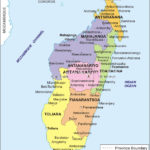
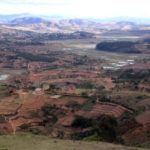
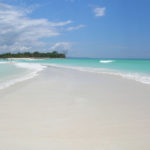

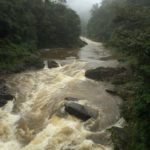
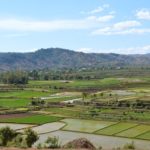
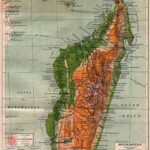

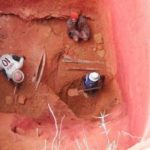
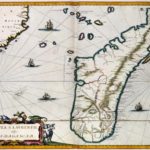




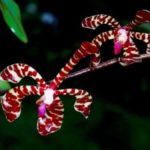
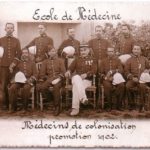
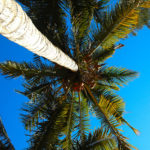

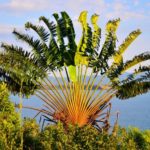

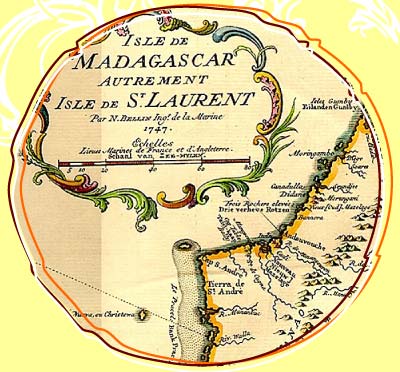
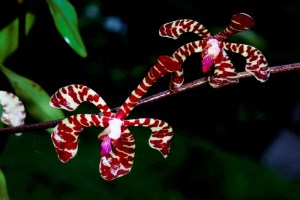
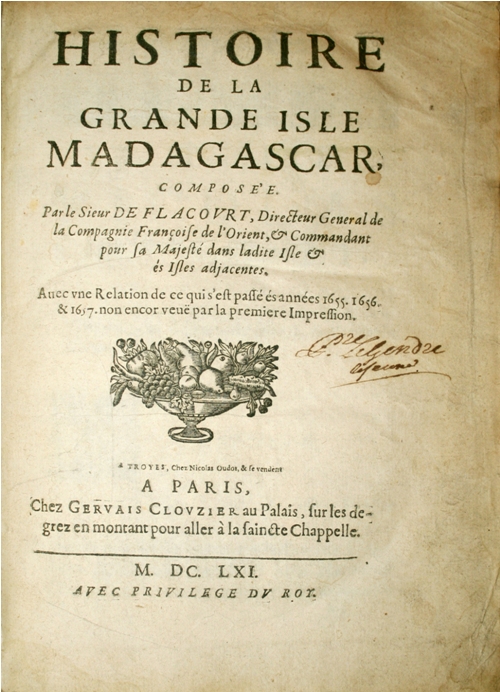
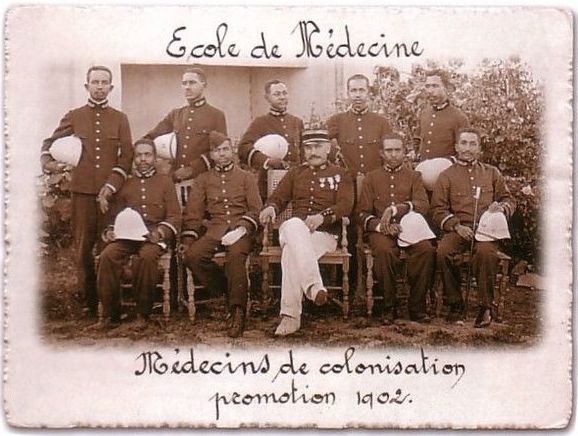
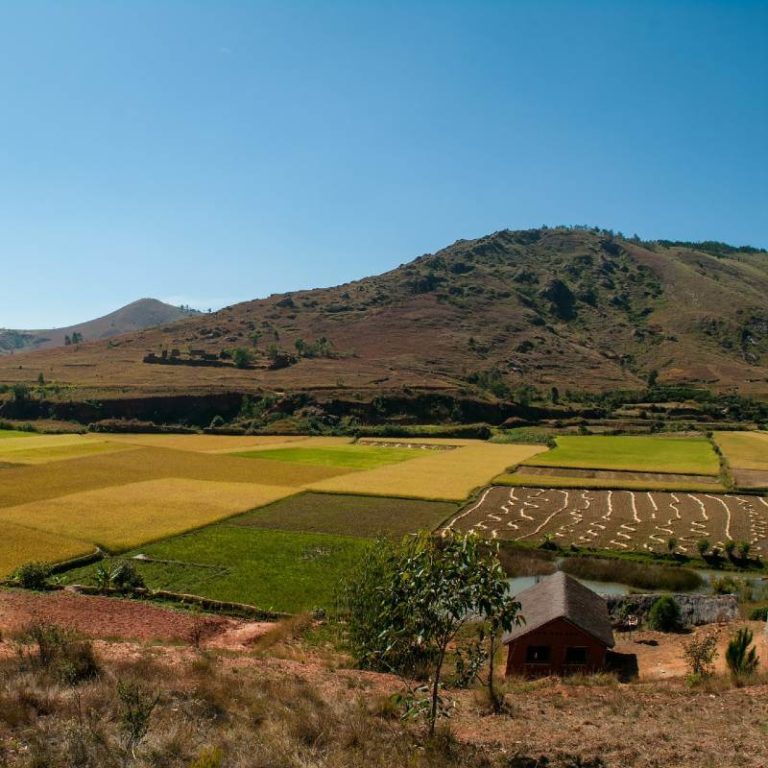
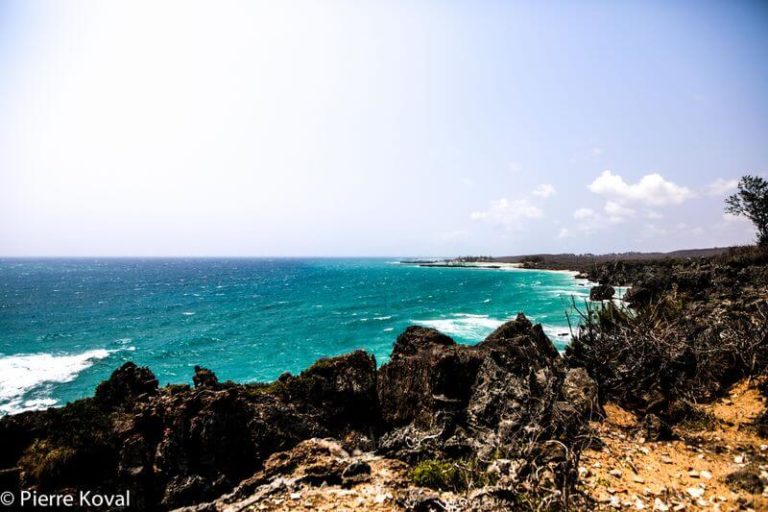

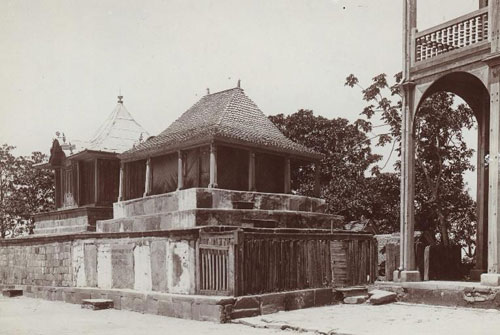




 Villa Sibylle Antananarivo (Madagascar)
Villa Sibylle Antananarivo (Madagascar)

